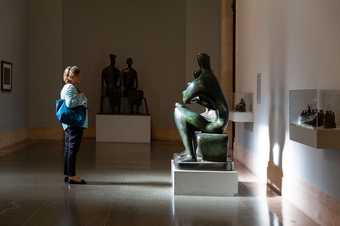
© Rikard Österlund
Henry Moore at Tate
Uncover the history of Henry Moore’s relationship with Tate and how the collection of his work was formed
The first room of the Henry Moore display reveals the history of the artist’s relationship with Tate and how the collection of his work was formed.
Moore built a close relationship with the Gallery: he served as a Trustee for two terms from 1941–56, and two large-scale retrospective exhibitions of his work were held in 1951 and 1968.
The most recent exhibition in 2010 at Tate Britain re-affirmed Moore’s status as one of the leading artists of the twentieth century.
Henry Moore’s friends and supporters were pivotal in shaping Tate’s collection of Moore’s work. Moore also donated sets of prints to the gallery in 1976 and his most significant act of generosity was the presentation of 36 sculptures in 1978.
Today, the Tate collection owns over 600 works ranging in date from 1921 to 1984, and including drawings, prints, and sculptures in wood, stone and metal.
Tate Britain
Main Floor
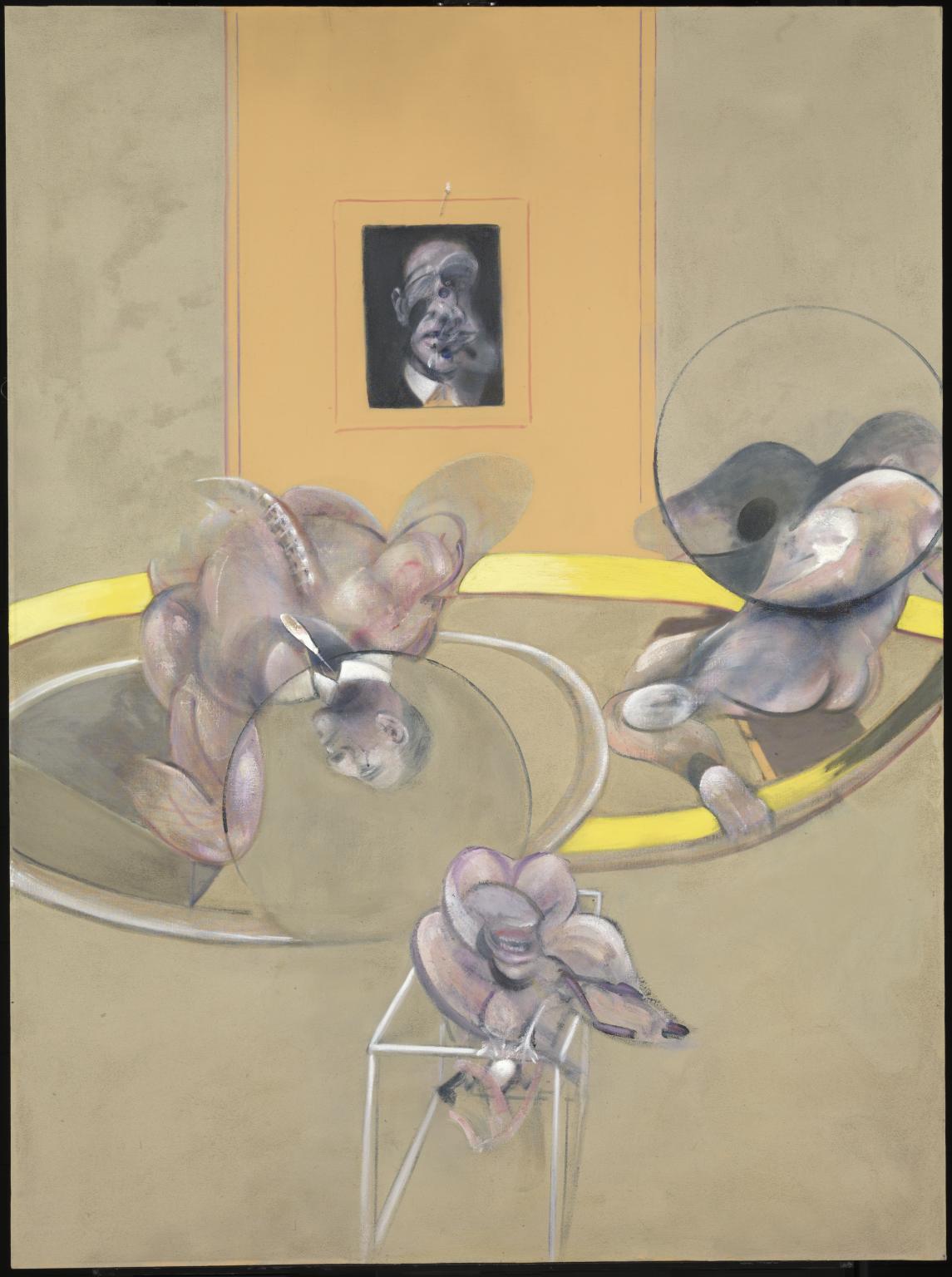
Francis Bacon, Three Figures and Portrait 1975
Two dynamic figures and bird-like creature are placed within a claustrophobic setting. The three figures are watched over by a portrait. This work is usually seen as an image of suffering. One - and possibly both - of the twisting human figures have been identified as George Dyer, Bacon’s companion, lover and muse. Dyer killed himself in 1971, but Bacon continued to portray him after his death. The bird-like form in the foreground, with its snarling human mouth, has been linked to the Furies, goddesses of vengeance in Greek mythology.
Gallery label, June 2021
1/30
artworks in Henry Moore at Tate

Henry Moore OM, CH, Falling Warrior 1956–7, cast c.1957–60
Moore was internationally famous for sculptures of female figures when, in the mid- 1950s, he produced a number of sculptures of vulnerable males. For these he looked to classical precedents, photographs and such other sources as the plaster casts of the victims of Pompeii. These suffering male figures spoke, perhaps, to current Cold War anxieties and memories of recent warfare.
Gallery label, September 2016
2/30
artworks in Henry Moore at Tate
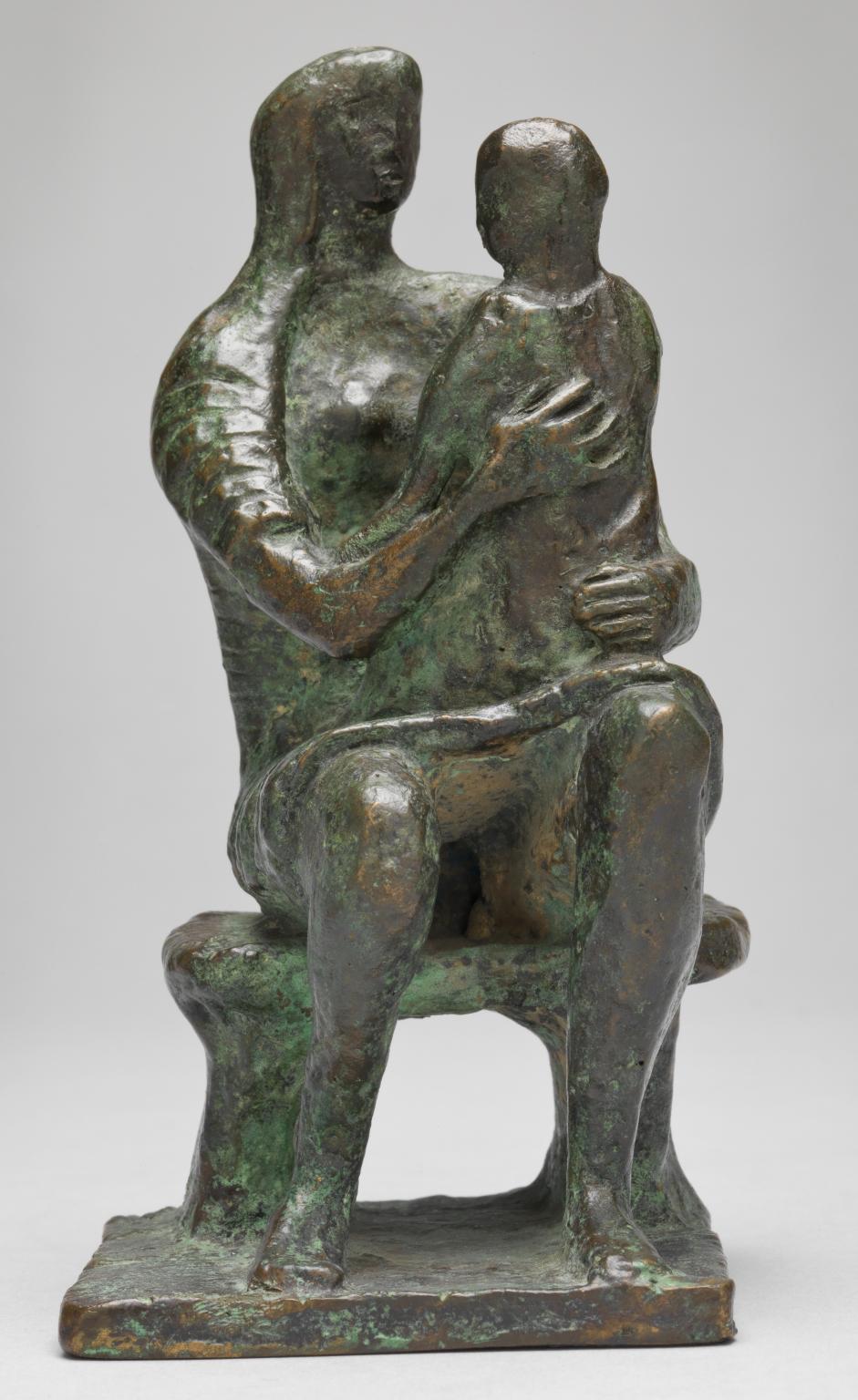
Henry Moore OM, CH, Maquette for Madonna and Child 1943, cast 1944–5
The mother and child had been a major theme in Moore’s work since the 1920s. Yet when the vicar of St Matthew, Northampton, invited Moore to make a sculpture of the Madonna and Child, he was reluctant to accept. He felt unsure how to adapt his secular interests to the Christian tradition. These bronzes are casts of the original terracotta models he made for the project. They are unusually naturalistic and steeped in references to Renaissance religious art. This suggests Moore was trying to produce a sculpture that people would find both modern and familiar.
Gallery label, September 2016
3/30
artworks in Henry Moore at Tate
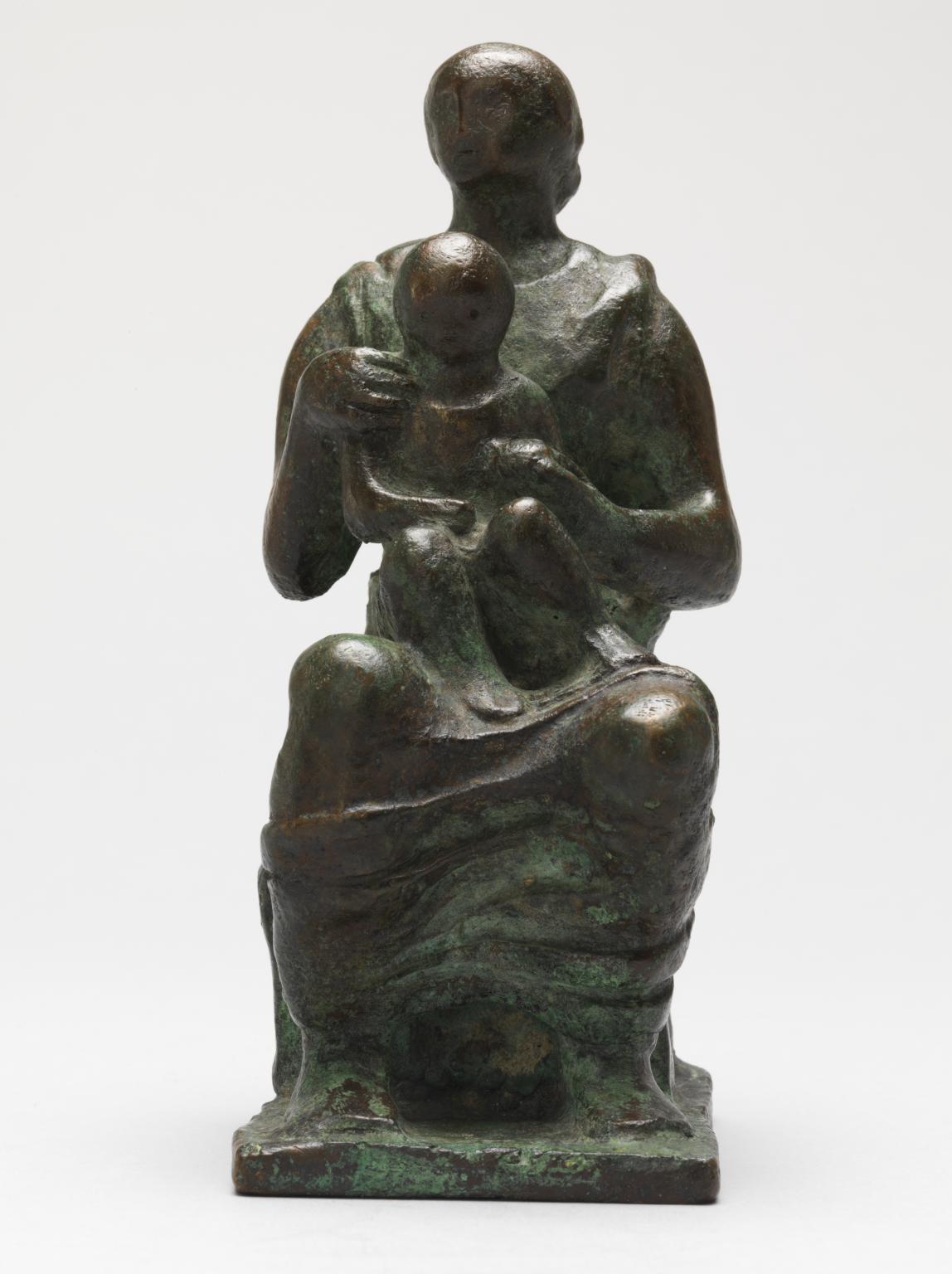
Henry Moore OM, CH, Maquette for Madonna and Child 1943, cast 1944–5
The mother and child had been a major theme in Moore’s work since the 1920s. Yet when the vicar of St Matthew, Northampton, invited Moore to make a sculpture of the Madonna and Child, he was reluctant to accept. He felt unsure how to adapt his secular interests to the Christian tradition. These bronzes are casts of the original terracotta models he made for the project. They are unusually naturalistic and steeped in references to Renaissance religious art. This suggests Moore was trying to produce a sculpture that people would find both modern and familiar.
Gallery label, September 2016
4/30
artworks in Henry Moore at Tate
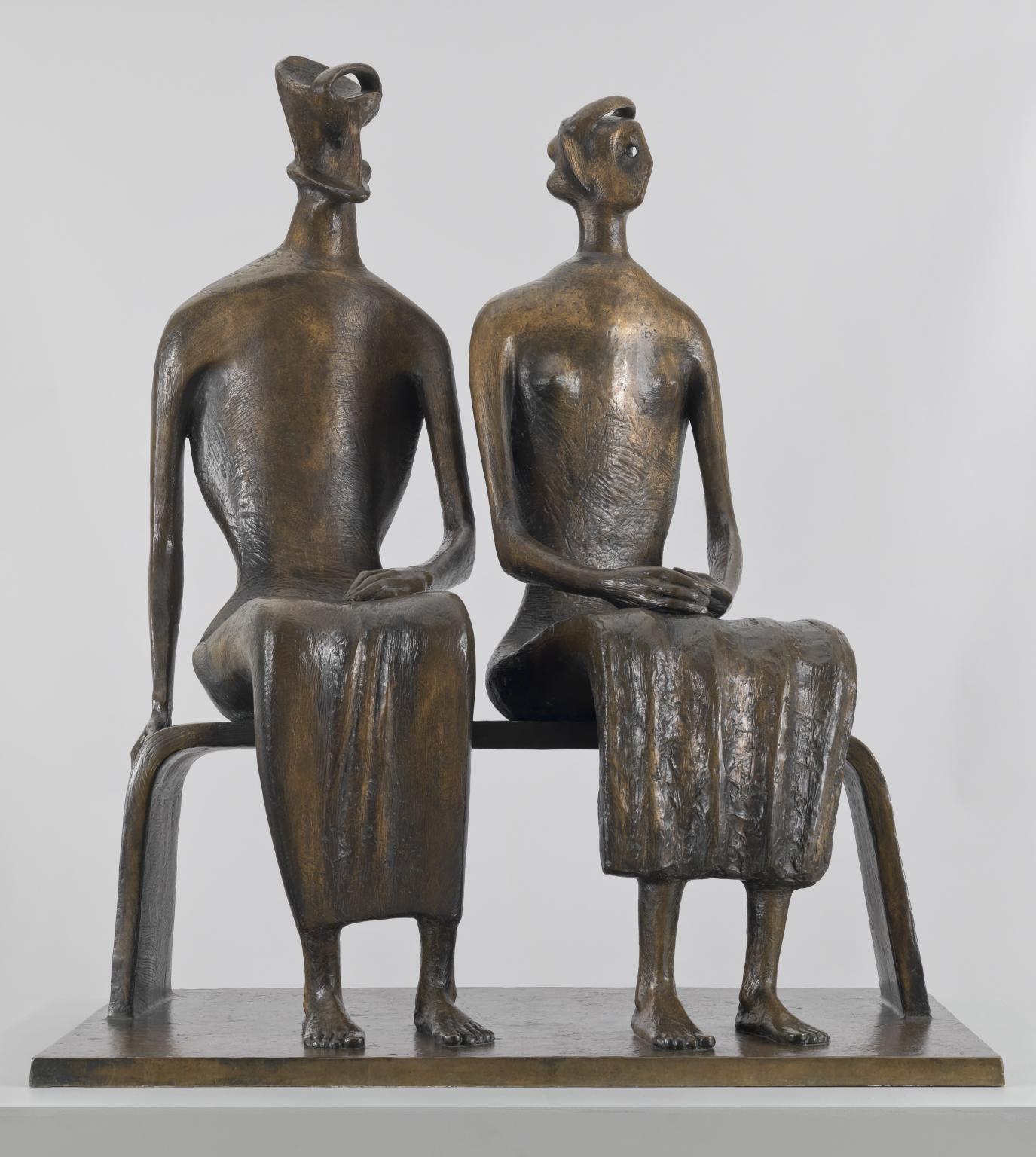
Henry Moore OM, CH, King and Queen 1952–3, cast 1957
Although this sculpture was made around the time of Elizabeth II’s coronation, its subject is not the modern constitutional monarchy. Instead it focuses on the ancient conception of the monarch as a divine or divinely blessed being.
Moore has combined naturalistic elements, for example the hands and feet, with more abstracted or primitivised ones, such as the heads. His intention was to suggest the blend of the human and celestial within kingship. This image of stable and benevolent authority resonated widely in the post-war climate of uncertainty.
Gallery label, August 2004
5/30
artworks in Henry Moore at Tate
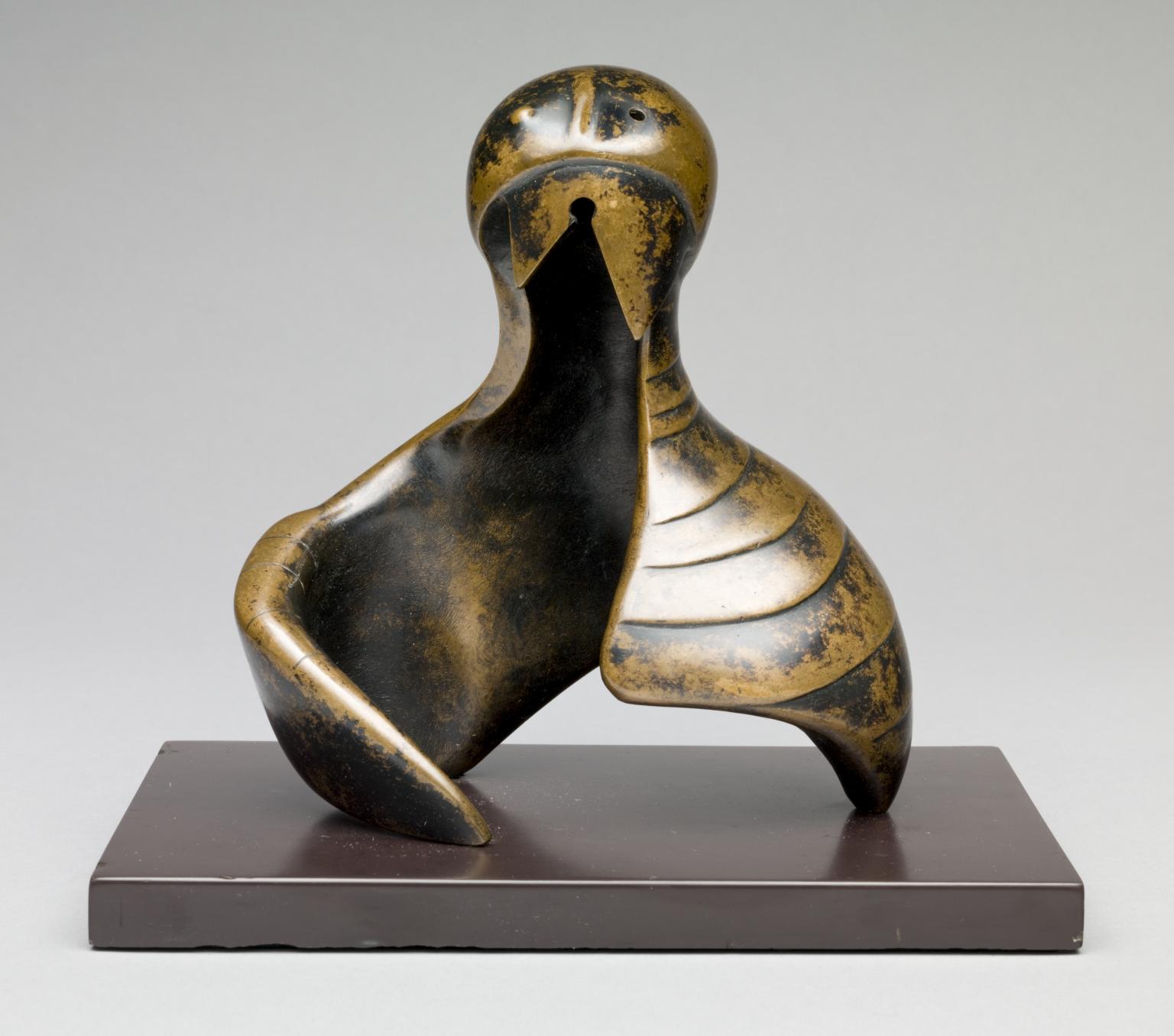
Henry Moore OM, CH, Helmet Head and Shoulders 1952, cast date unknown
British sculptor Henry Moore once described the helmet motif as ‘a recording of things inside other things’. It was related to a major theme in his work: the mother and child. While some of Moore’s sculptures present this relationship as benign and nurturing, other works suggest something more mysterious and ambiguous. Although the protective wings gently envelop the interior void, the toothed visor and claw shape impart a sense of menace, even aggression. The scuffed patina implies some ancient, battle-scarred creature.
Henry Moore was born in Castleford, West Yorkshire in 1898 and died near Much Hadham, Hertfordshire in 1986.
Gallery label, August 2004
6/30
artworks in Henry Moore at Tate
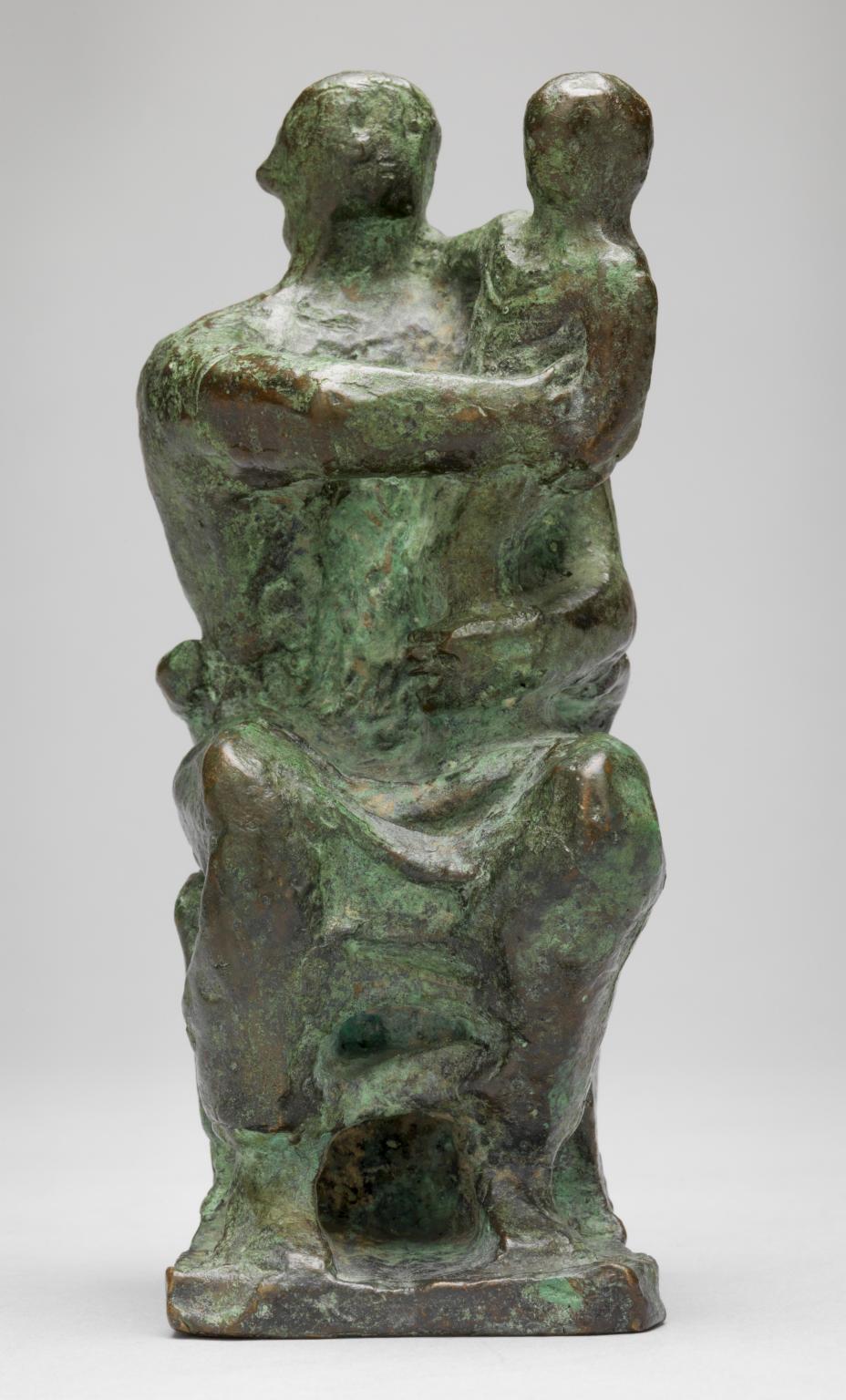
Henry Moore OM, CH, Maquette for Madonna and Child 1943, cast 1944–5
The mother and child had been a major theme in Moore’s work since the 1920s. Yet when the vicar of St Matthew, Northampton, invited Moore to make a sculpture of the Madonna and Child, he was reluctant to accept. He felt unsure how to adapt his secular interests to the Christian tradition. These bronzes are casts of the original terracotta models he made for the project. They are unusually naturalistic and steeped in references to Renaissance religious art. This suggests Moore was trying to produce a sculpture that people would find both modern and familiar.
Gallery label, September 2016
7/30
artworks in Henry Moore at Tate
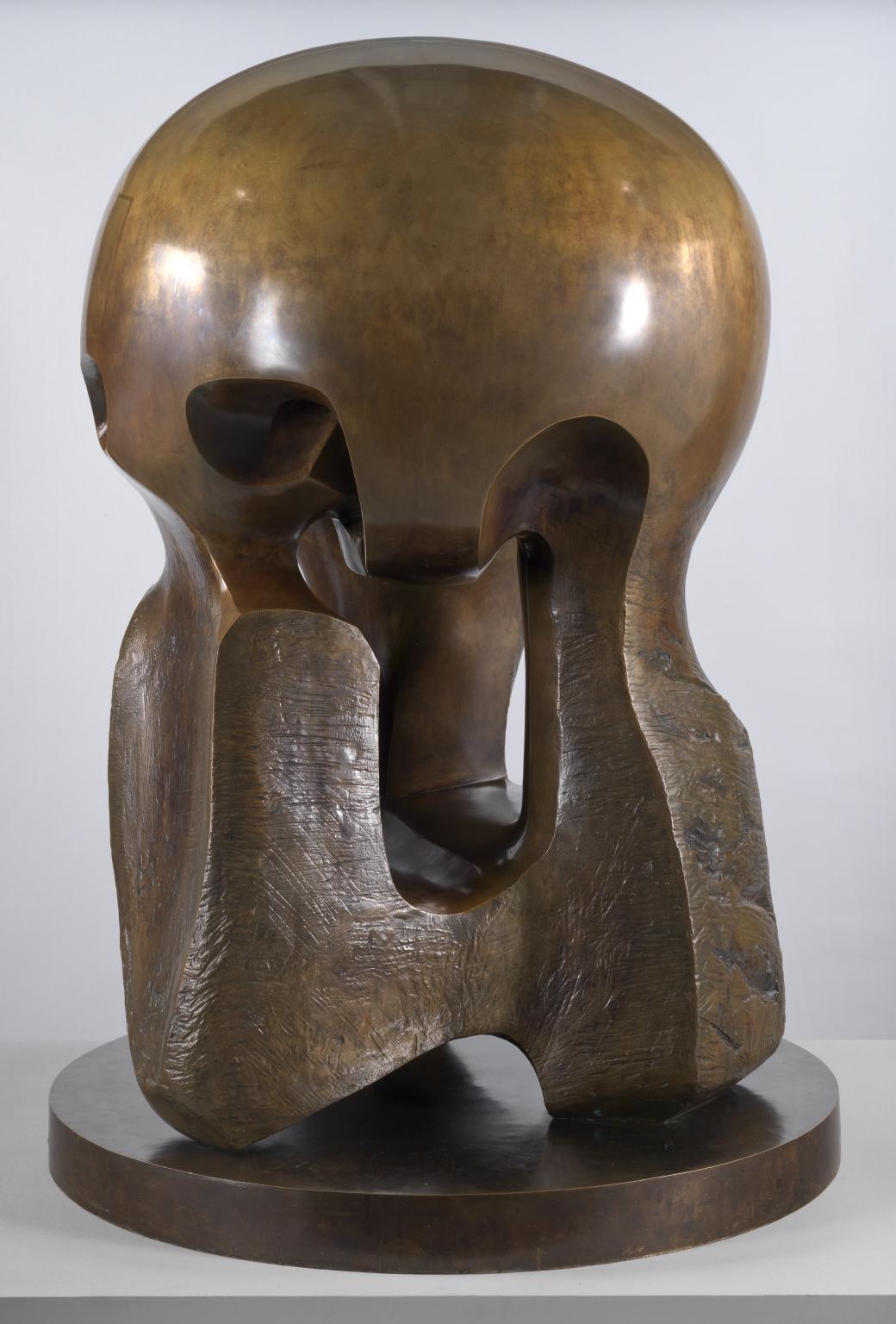
Henry Moore OM, CH, Atom Piece (Working Model for Nuclear Energy) 1964–5, cast 1965
In 1963 Moore was invited by the University of Chicago to make a sculpture commemorating the first controlled nuclear chain reaction, which had been conducted at the university in 1942. Nuclear Energy, which is shown in the photograph above, was unveiled in 1967. This sculpture is a working model for Nuclear Energy. Moore intended it to suggest ‘a contained power and force’ appropriate to the subject. Its shape suggests a human skull and a mushroom cloud. In 1987, the city of Hiroshima, which had been destroyed by a nuclear bomb in 1945, purchased one of the seven casts.
Gallery label, September 2004
8/30
artworks in Henry Moore at Tate
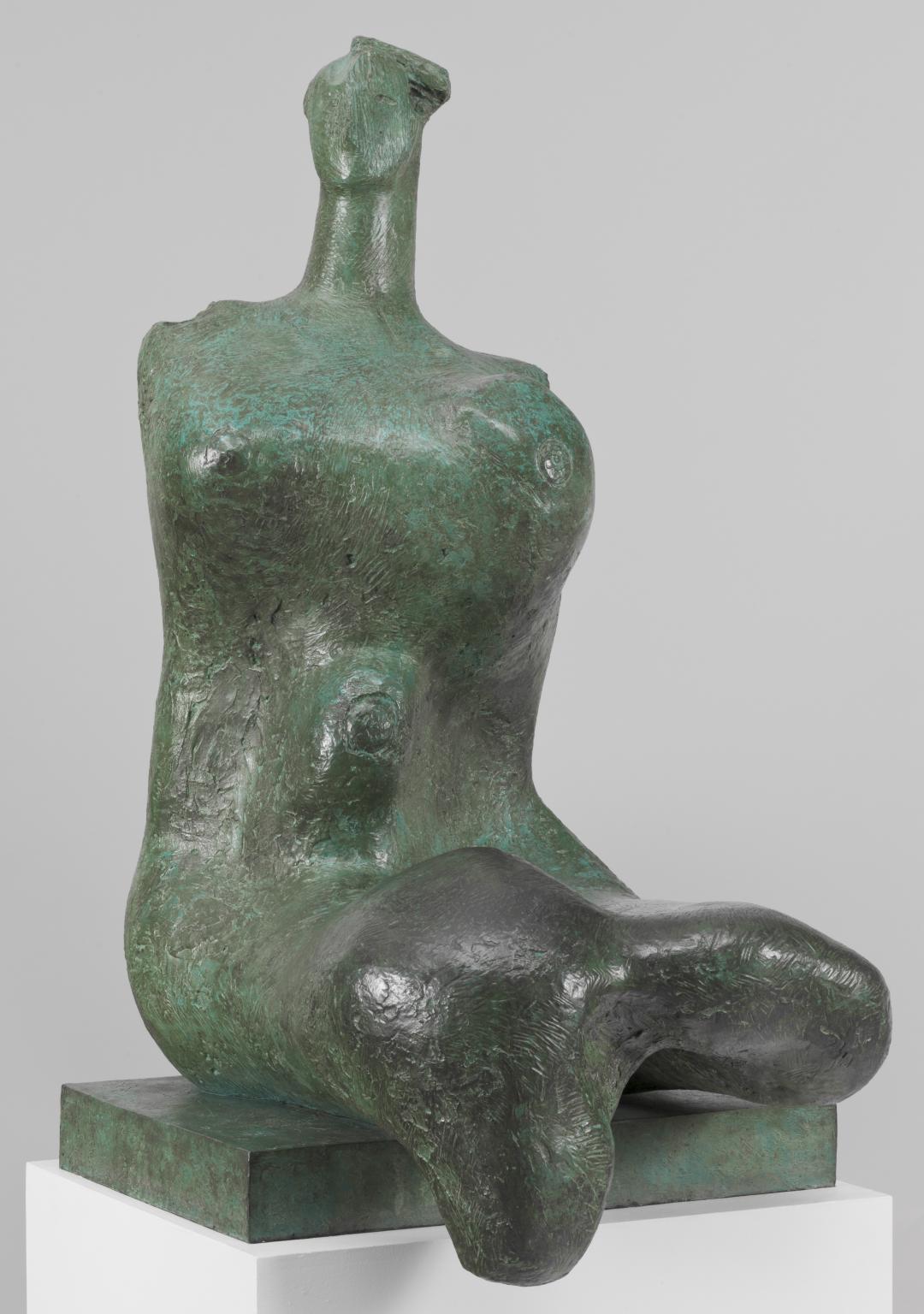
Henry Moore OM, CH, Woman 1957–8, cast date unknown
This is one of the largest of Moore's sculptures of a seated female nude, and it was cast in an edition of nine. The original plaster is in the Art Gallery of Ontario, Toronto, and the curator there, Alan Wilkinson, has described this sculpture as 'one of the most potent images of fertility produced in the 20th century'. He also related it to Moore's early interest in Palaeolithic sculpture, an influence the artist readily acknowledged. Moore wrote of the work: ''Woman' has that startling fullness of the stomach and breasts. The smallness of the head is necessary to emphasize the massiveness of the body - if the head had been any larger it would have ruined the whole idea of the sculpture.'
Gallery label, September 2004
9/30
artworks in Henry Moore at Tate
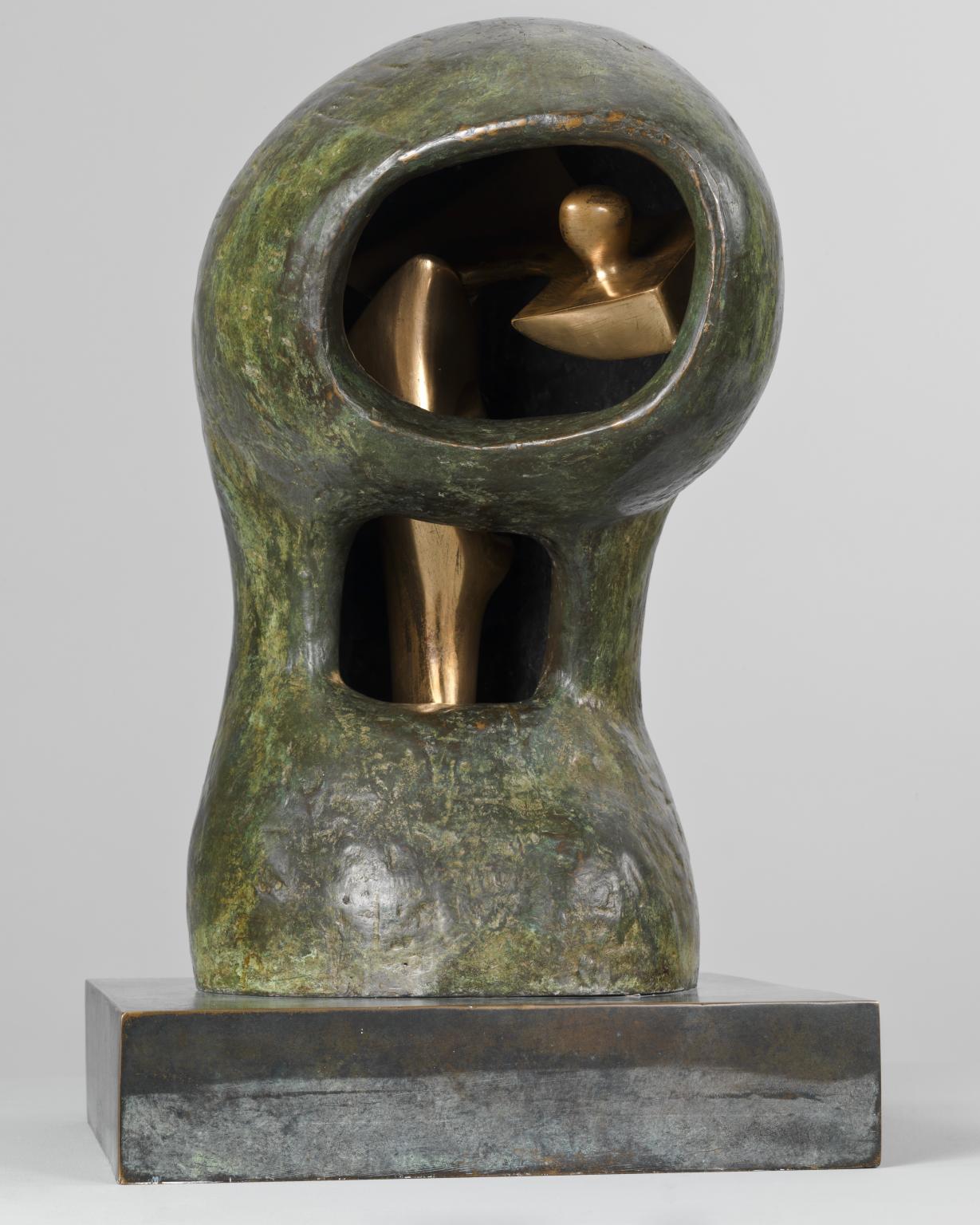
Henry Moore OM, CH, Helmet Head No.4: Interior-Exterior 1963, cast date unknown
Moore made a sequence of Helmet Head pieces that were intended to convey emotions of vulnerability and protection. He explained the idea partly came from ‘Wyndham Lewis talking about the shell of lobster covering the soft flesh inside. This became an established idea with me – that of an outer protection to an inner form, and it may have something to do with the mother and child idea ... The helmet is a kind of protection thing, too, and it became a recording of things inside other things. In the helmet you do not quite know what is inside.’
Gallery label, February 2010
10/30
artworks in Henry Moore at Tate
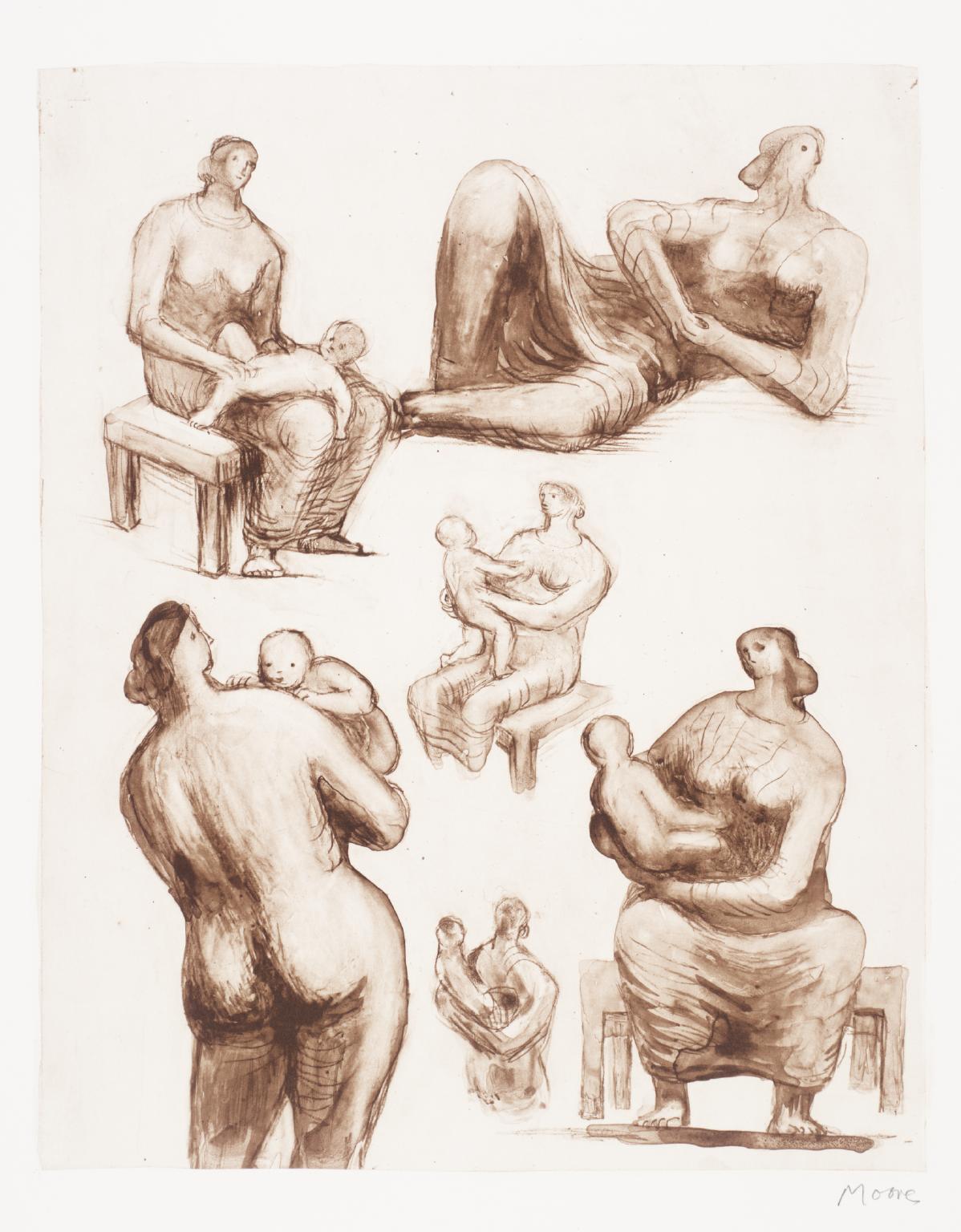
Henry Moore OM, CH, Mother and Child Studies and Reclining Figure 1977
11/30
artworks in Henry Moore at Tate
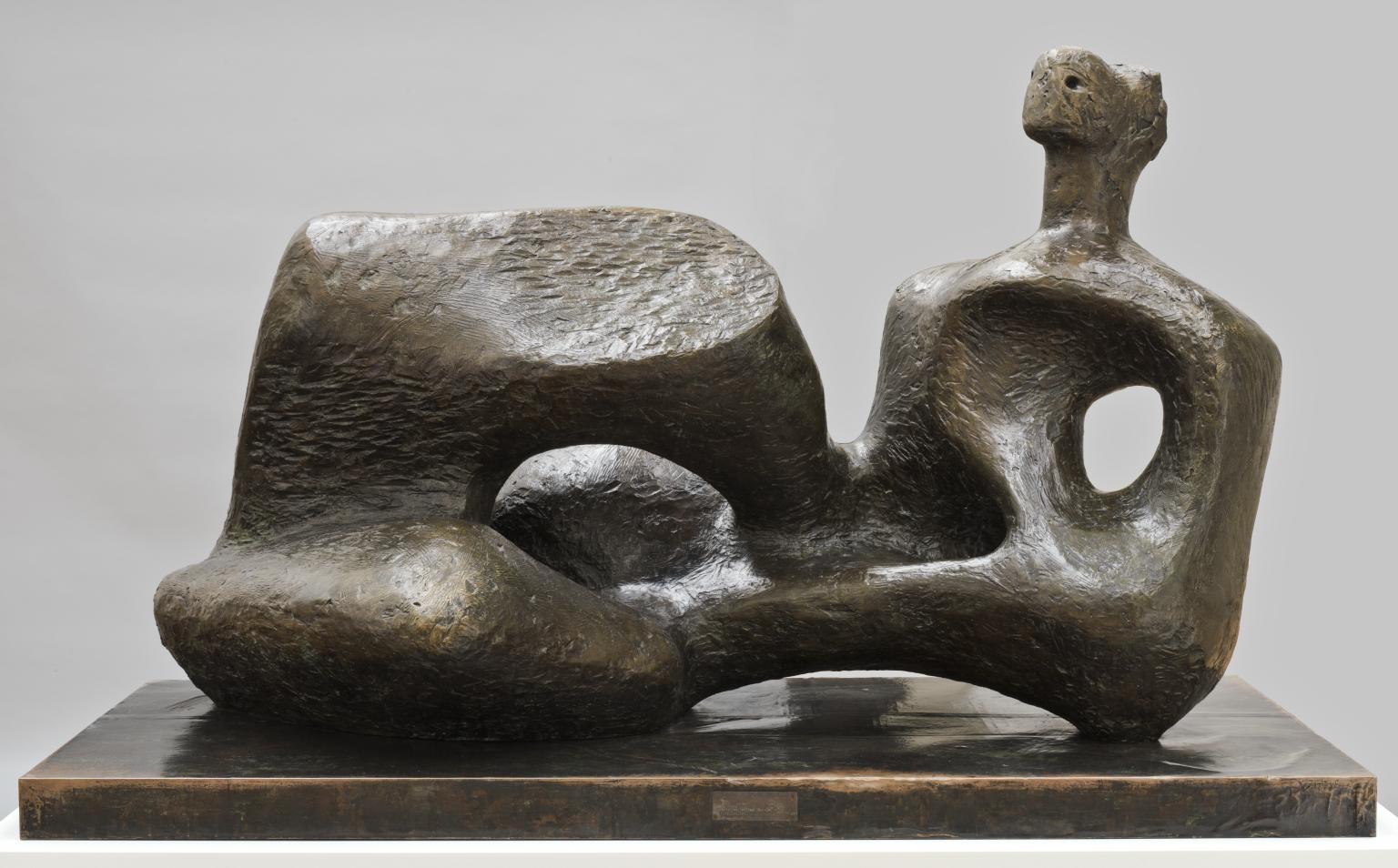
Henry Moore OM, CH, Working Model for Unesco Reclining Figure 1957, cast c.1959–61
This sculpture is related to the UNESCO Reclining Figure at UNESCO’s Paris headquarters shown in the photograph above. That work is carved from travertine marble and is unique. This smaller bronze sculpture is in an edition of six. As with his other public sculptures Moore sought to avoid narrative or overt rhetoric. The universal significance attributed to Moore’s sculpture made it particularly appropriate for a global organisation such as UNESCO.
Gallery label, September 2004
12/30
artworks in Henry Moore at Tate

Henry Moore OM, CH, Trees V Spreading Branches 1979
13/30
artworks in Henry Moore at Tate
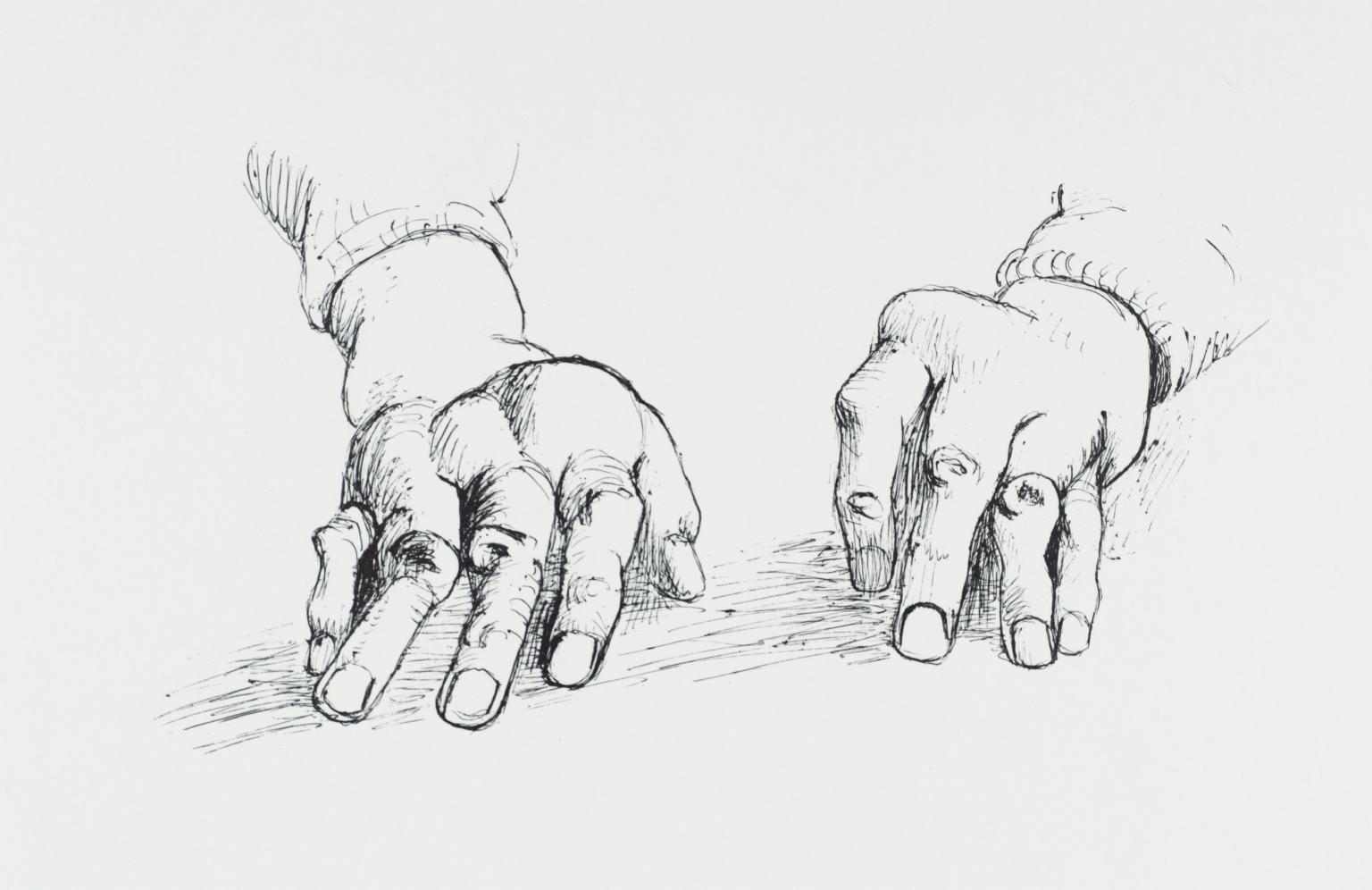
Henry Moore OM, CH, Hands of Dorothy Crowfoot Hodgkin I 1978
14/30
artworks in Henry Moore at Tate
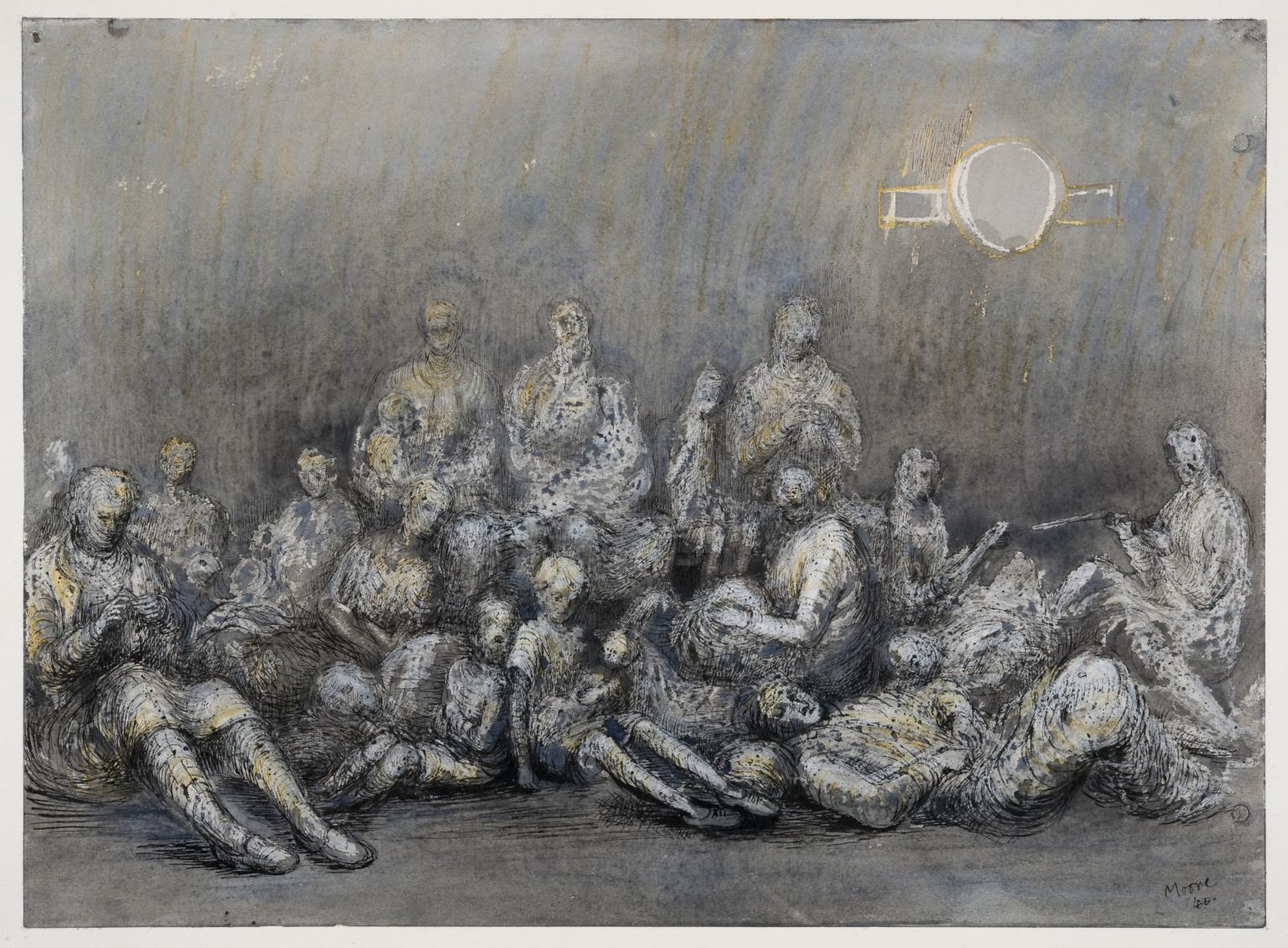
Henry Moore OM, CH, Grey Tube Shelter 1940
One evening in autumn 1940, Moore took cover from an air raid in Belsize Park underground station. Looking around at the people sheltering there, he became 'fascinated by the sight of people camping out deep under ground'. On returning to his studio he made some drawings from memory. When Kenneth Clark, chairman of the War Artists Advisory Committee, saw the pictures he commissioned further drawings and appointed Moore as an official war artist.
These drawings were exhibited for the first time in 1941. They were often interpreted as metaphors for the stoic resistance of the British people in the face of war.
Gallery label, September 2004
15/30
artworks in Henry Moore at Tate
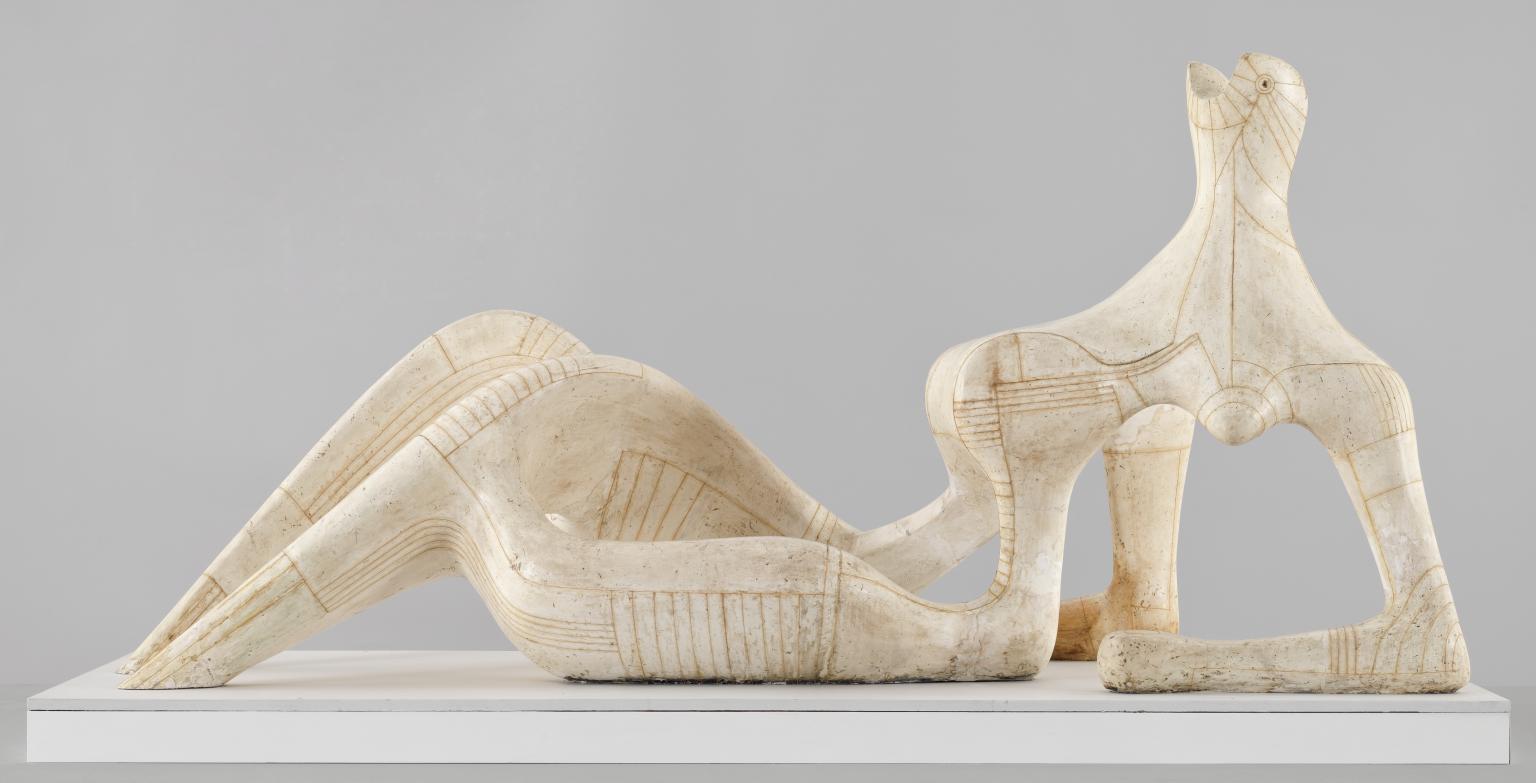
Henry Moore OM, CH, Reclining Figure 1951
In the late 1940s, the Arts Council invited Moore to submit ideas for a sculpture to be sited at the South Bank site of the Festival of Britain. Although the organising committee suggested a family theme, Moore chose to make this tense, skeletal reclining form. The work on display is the plaster model for the bronze, which was cast in an edition of five.
Gallery label, September 2004
16/30
artworks in Henry Moore at Tate
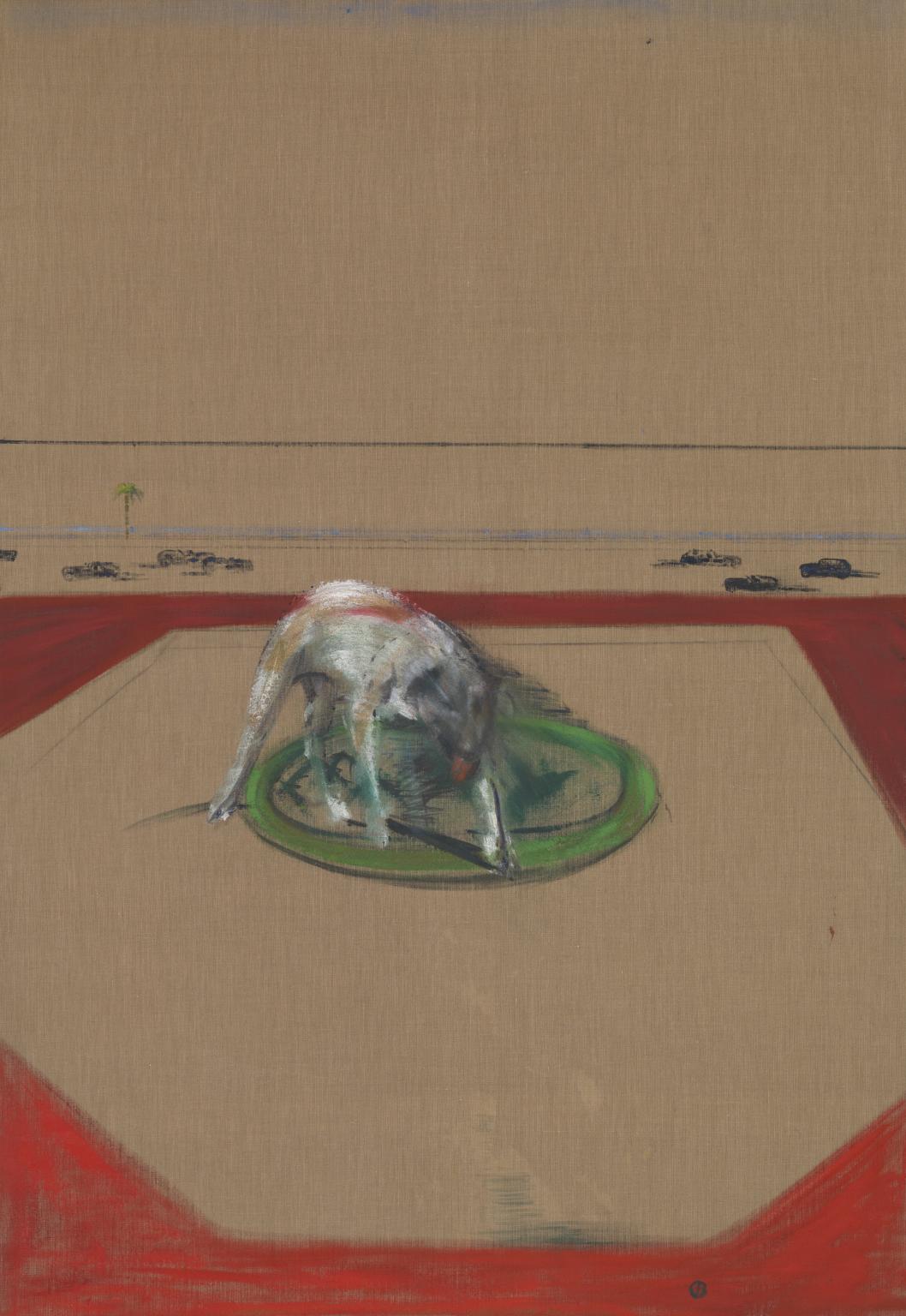
Francis Bacon, Dog 1952
Throughout his career, Francis Bacon included animals in his paintings to represent the wildness of human emotion. Here, Bacon viscerally smears paint to suggest a snarling dog, evoking aggression, vulnerability or both. The image comes from Eadweard Muybridge's 1887 time-lapse photographs of animals in motion. Bacon isolates the dog, placing it in an ambiguous setting based on the sea front in Monte Carlo, where he lived from 1946 to 1950.
Gallery label, August 2024
17/30
artworks in Henry Moore at Tate
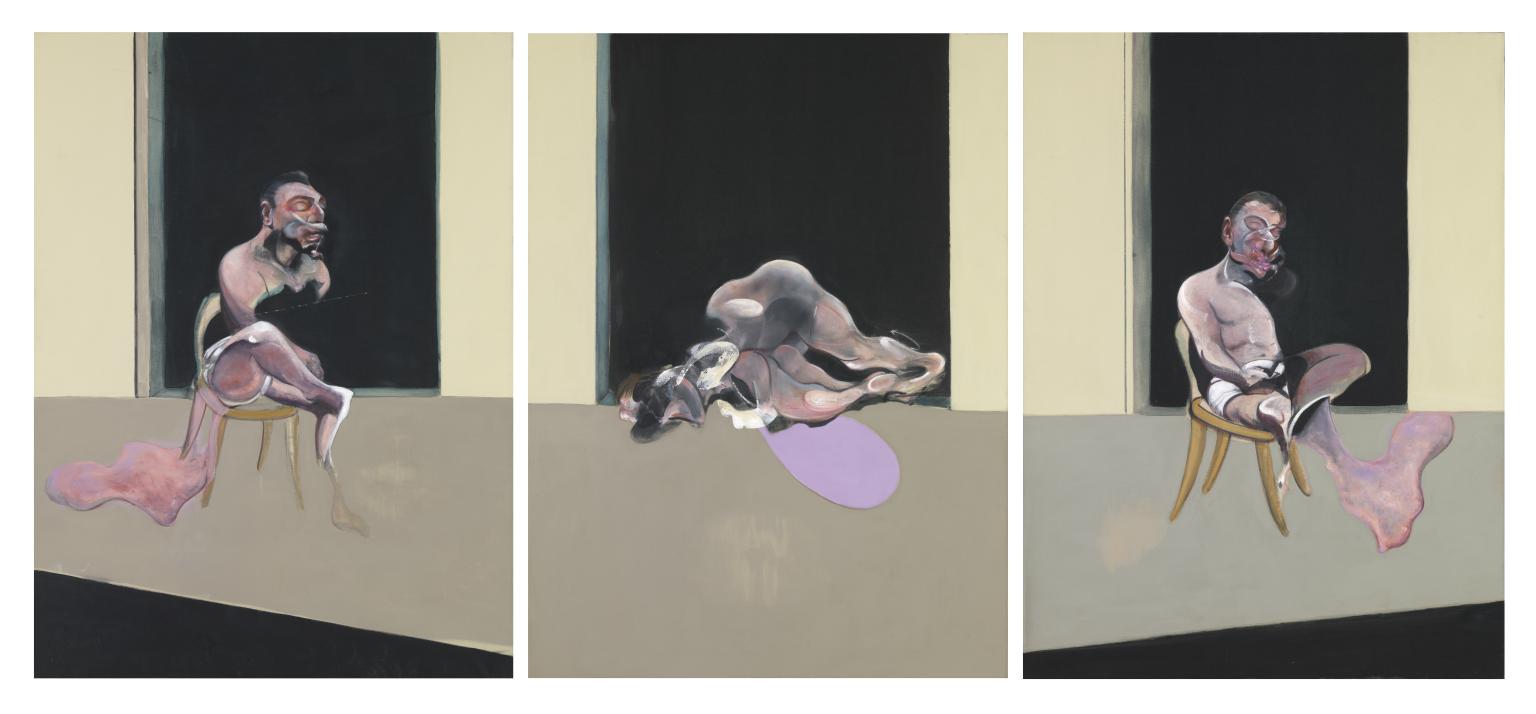
Francis Bacon, Triptych August 1972 1972
This work is generally considered one in a series of Black Triptychs which followed the suicide of Bacon’s lover, George Dyer. Dyer appears on the left and Bacon is on the right. The central group is derived from a photograph of wrestlers by Edward Muybridge, but also suggests a more sexual encounter. The seated figures and their coupling are set against black voids and the central flurry has been seen as ‘a life-and death struggle’. The artist’s biographer wrote: ‘What death has not already consumed seeps incontinently out of the figures as their shadows.’
Gallery label, September 2016
18/30
artworks in Henry Moore at Tate
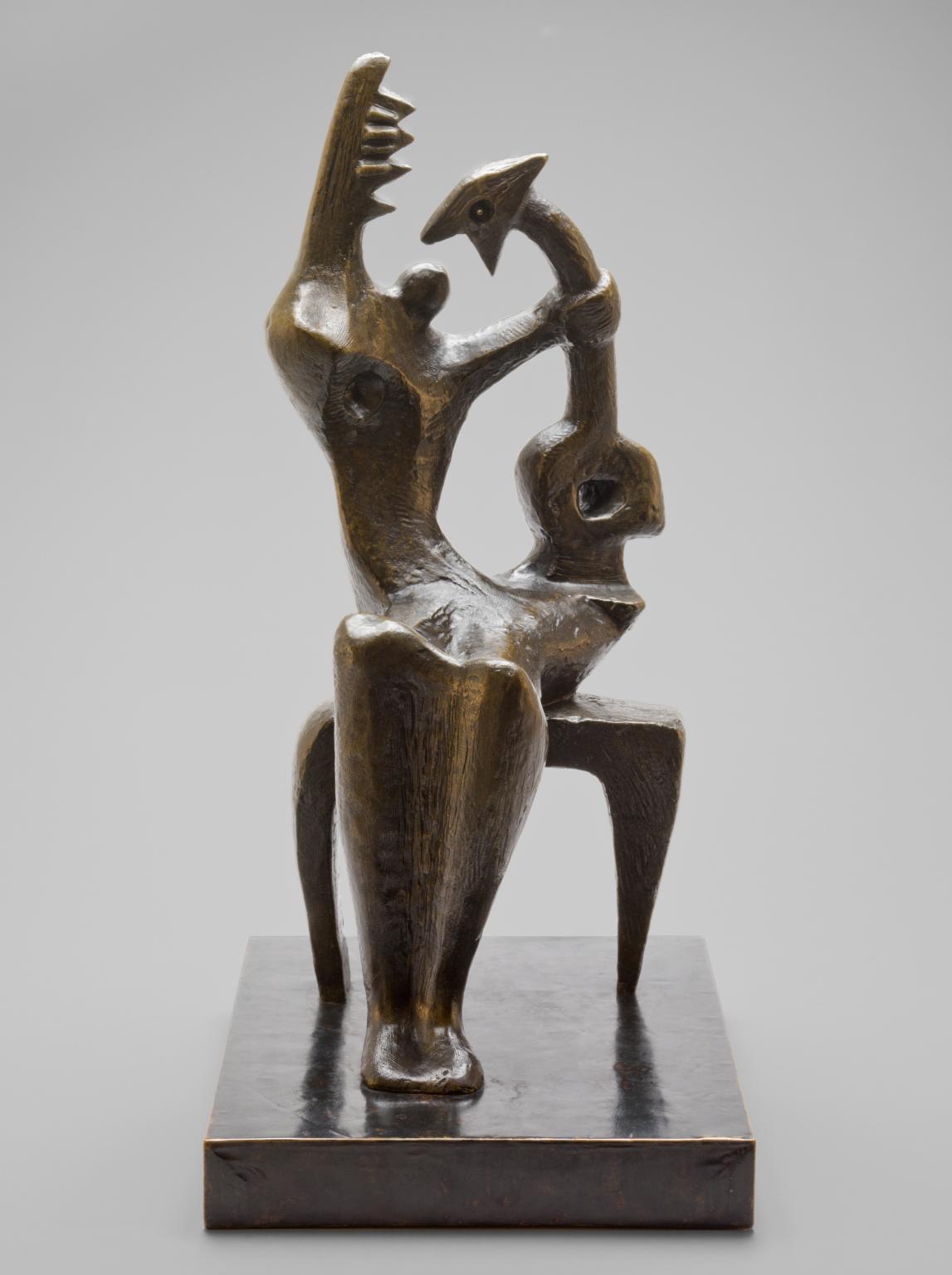
Henry Moore OM, CH, Mother and Child 1953, cast c.1954
Moore treated the subject of mother and child repeatedly. This sculpture is one of a group of small bronzes made by the artist during the early 1950s that focus specifically on the relationship between mother and child. During the Second World War Moore's interpretation of the theme emphasised the mother's nurturing role, a response to the human suffering of war. He continued to explore this aspect of the subject in the 1950s. Here he distorts the figures to suggest the submission of the mother to the aggressive needs of the child as it tries to suckle from her breast.
Gallery label, February 2010
19/30
artworks in Henry Moore at Tate
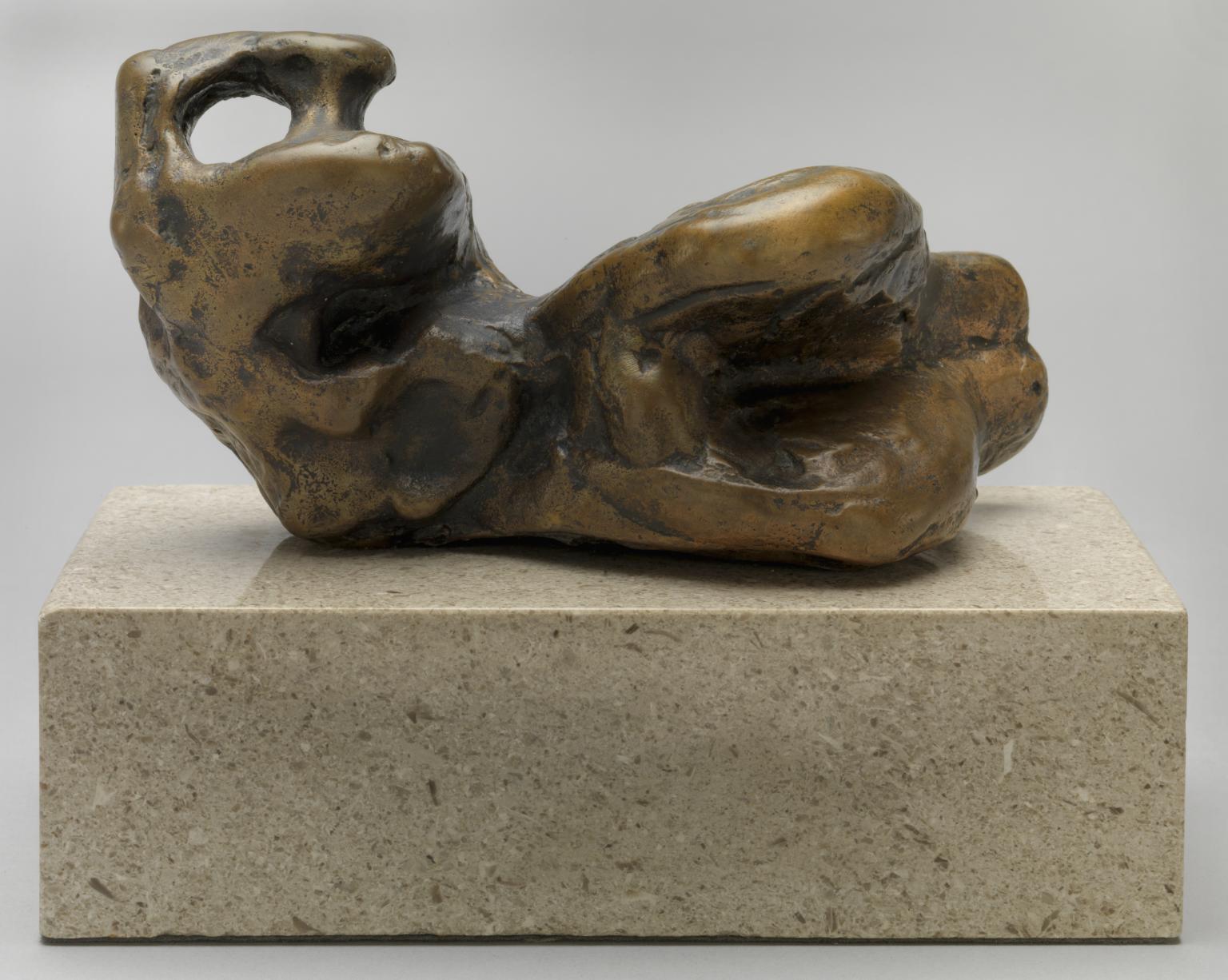
Henry Moore OM, CH, Reclining Figure: Bunched 1961, cast 1961–2
By the mid-1950s Moore had almost entirely eliminated drawing from his creative process and explored his ideas through small maquettes. These had an intrinsic quality of immediacy or spontaneity and allowed him to imagine the finished product in the round. In order to translate the scale of the work more effectively, he often made larger working models as an intermediate stage between the maquette and the finished sculpture. Moore’s maquettes were typically cast in bronze in editions of up to ten. The sculptor strove for monumentality in his work and tried to imbue the same quality in the small maquettes. He also took a great deal of care with their finish. Some were more polished than others, some darker, some greener. Moore did all the patination himself, treating the bronze with different acids to achieve different effects then working on it by hand, rubbing and wearing it down.
Gallery label, September 2004
20/30
artworks in Henry Moore at Tate
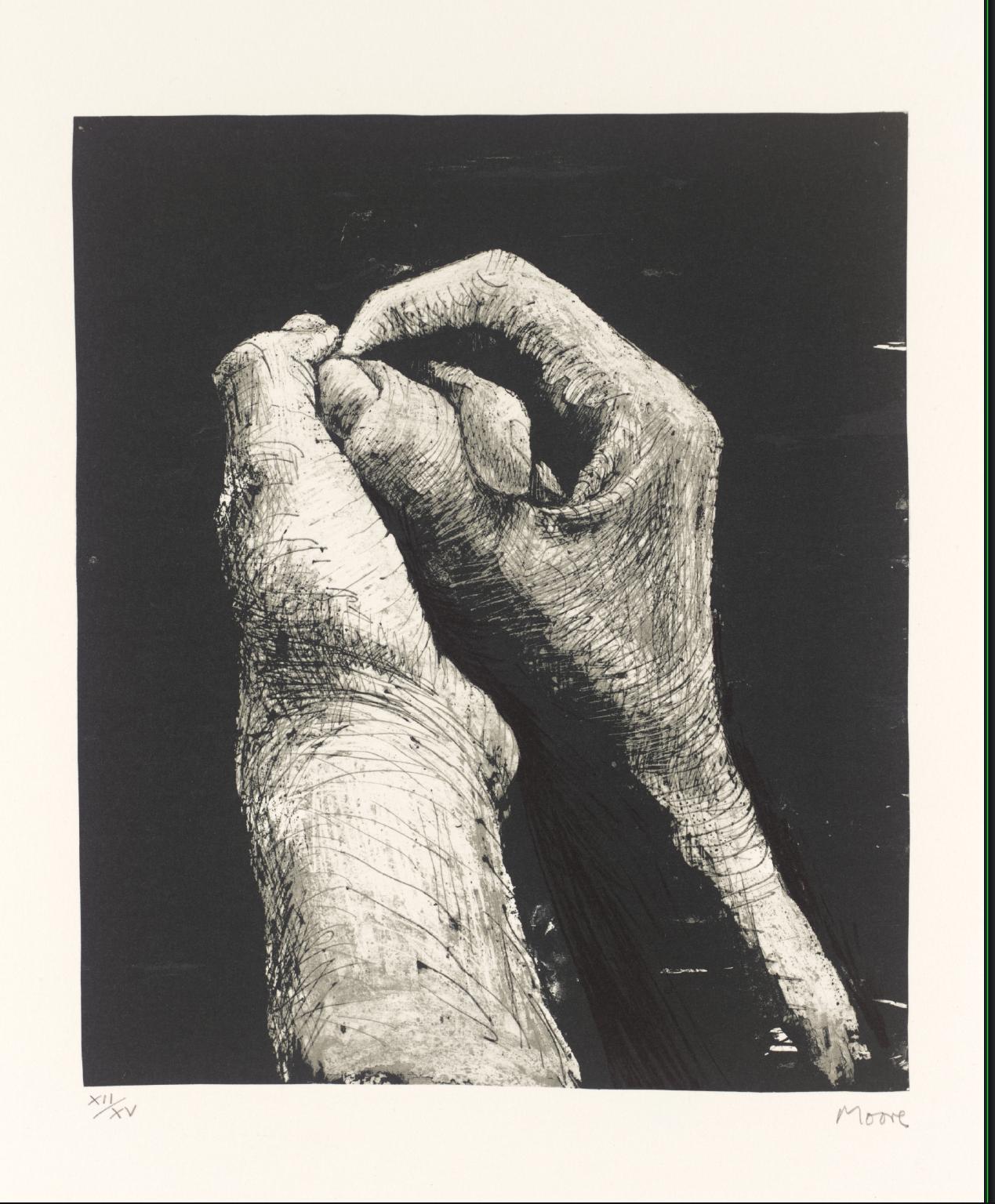
Henry Moore OM, CH, Hands II 1973
21/30
artworks in Henry Moore at Tate
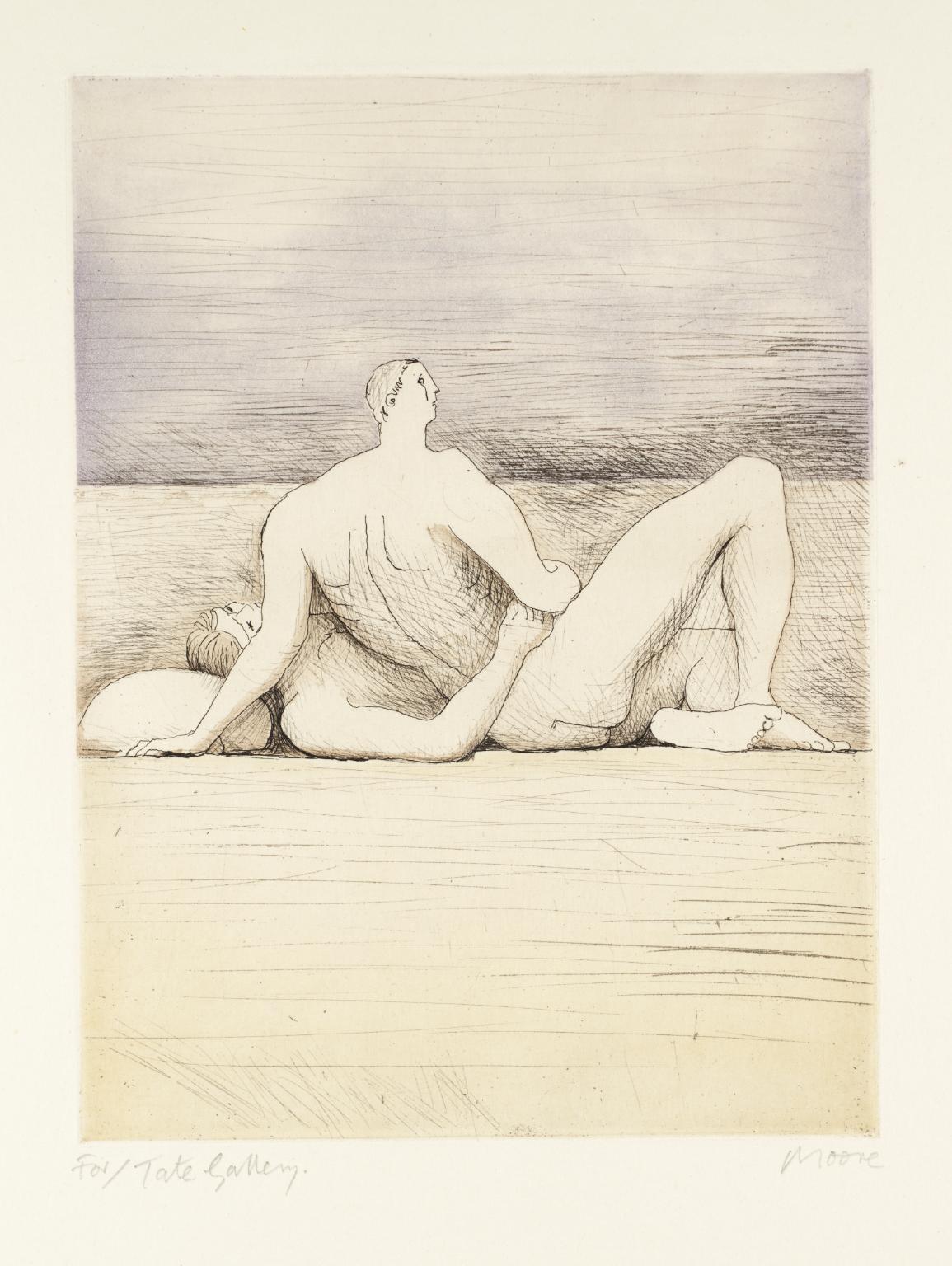
Henry Moore OM, CH, Reclining Figures Man and Woman II 1975
22/30
artworks in Henry Moore at Tate
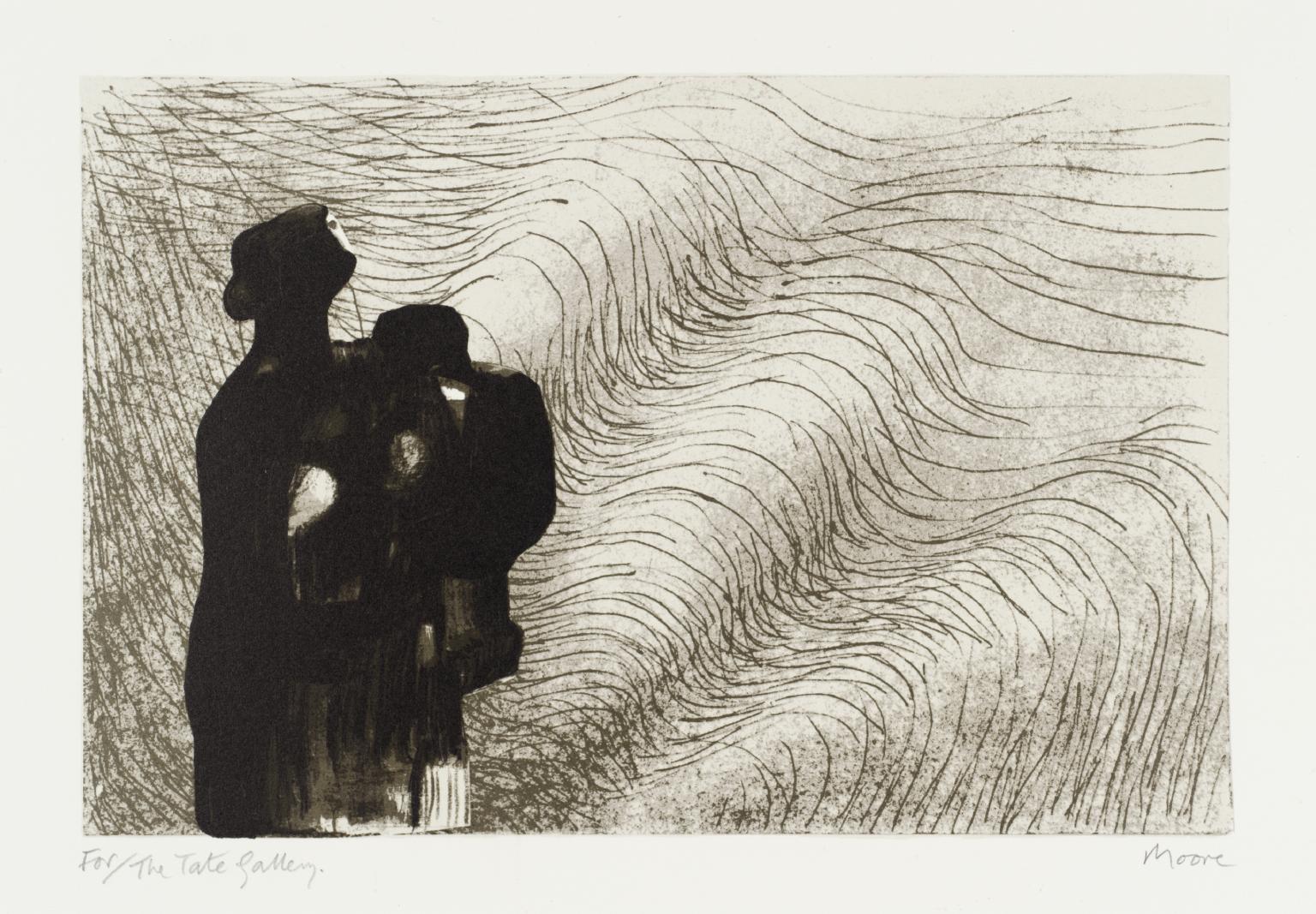
Henry Moore OM, CH, Mother and Child with Wave Background I 1976
23/30
artworks in Henry Moore at Tate
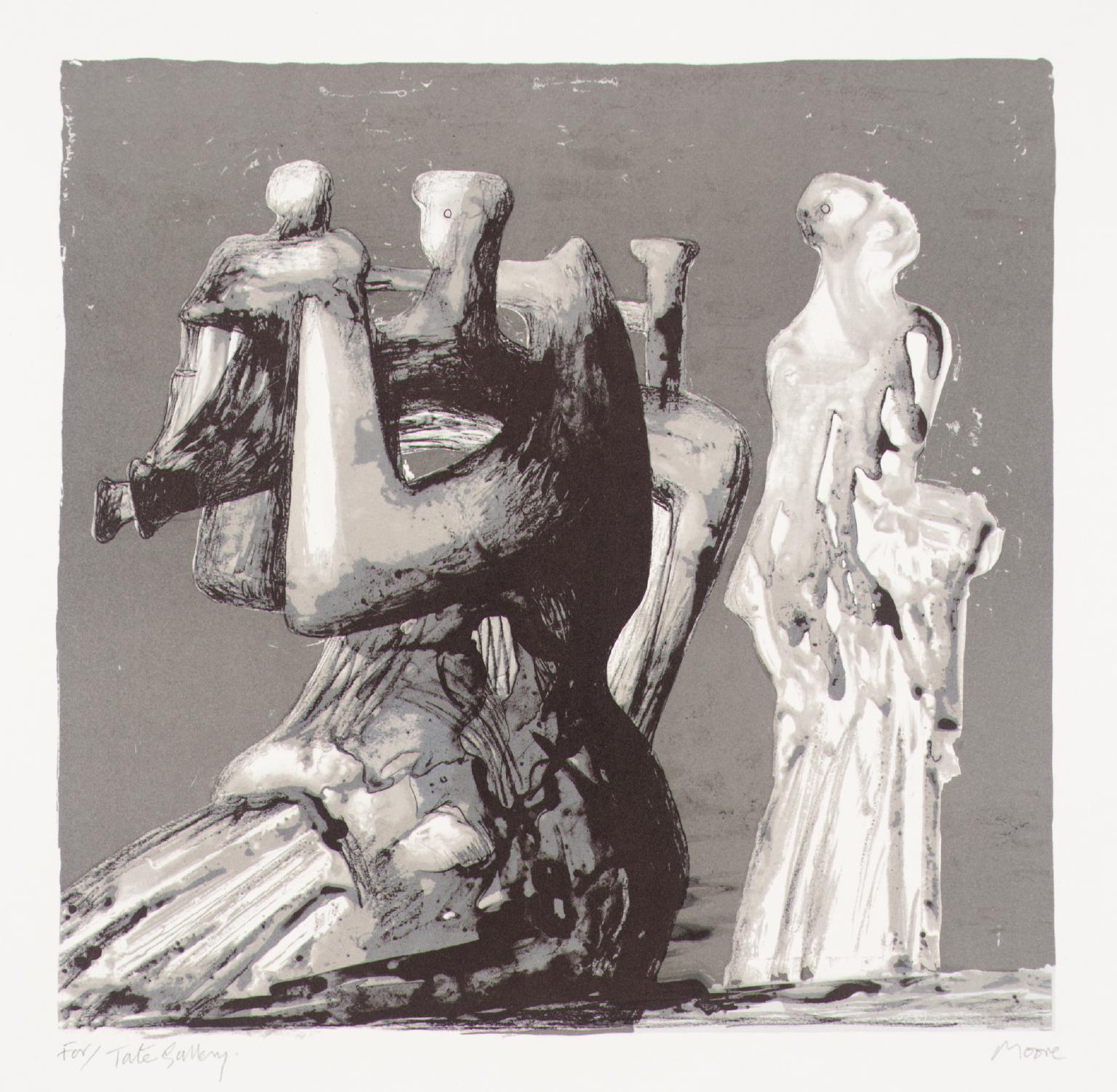
Henry Moore OM, CH, Mother and Child with Dark Background 1976
24/30
artworks in Henry Moore at Tate
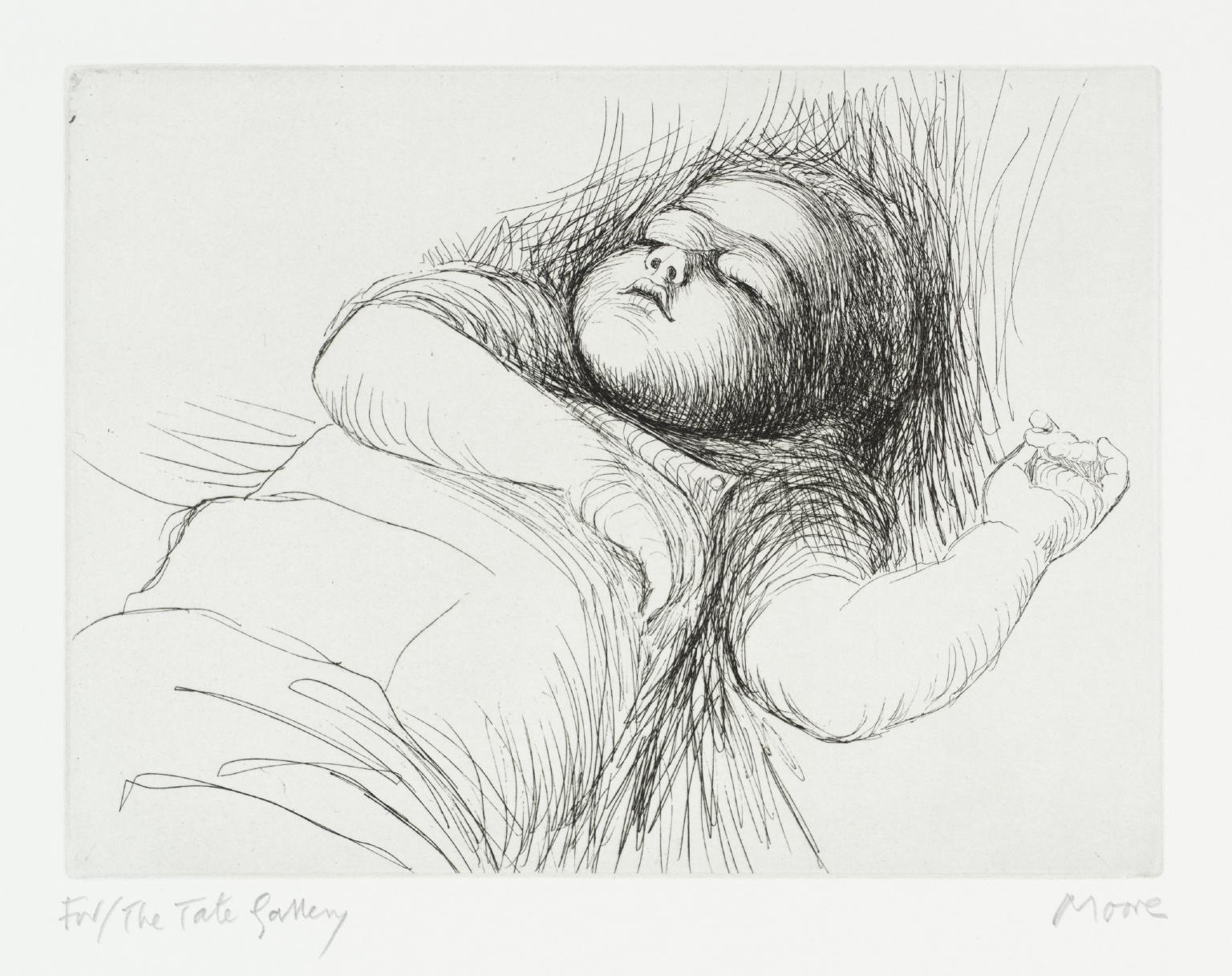
Henry Moore OM, CH, Sleeping Child 1979
25/30
artworks in Henry Moore at Tate
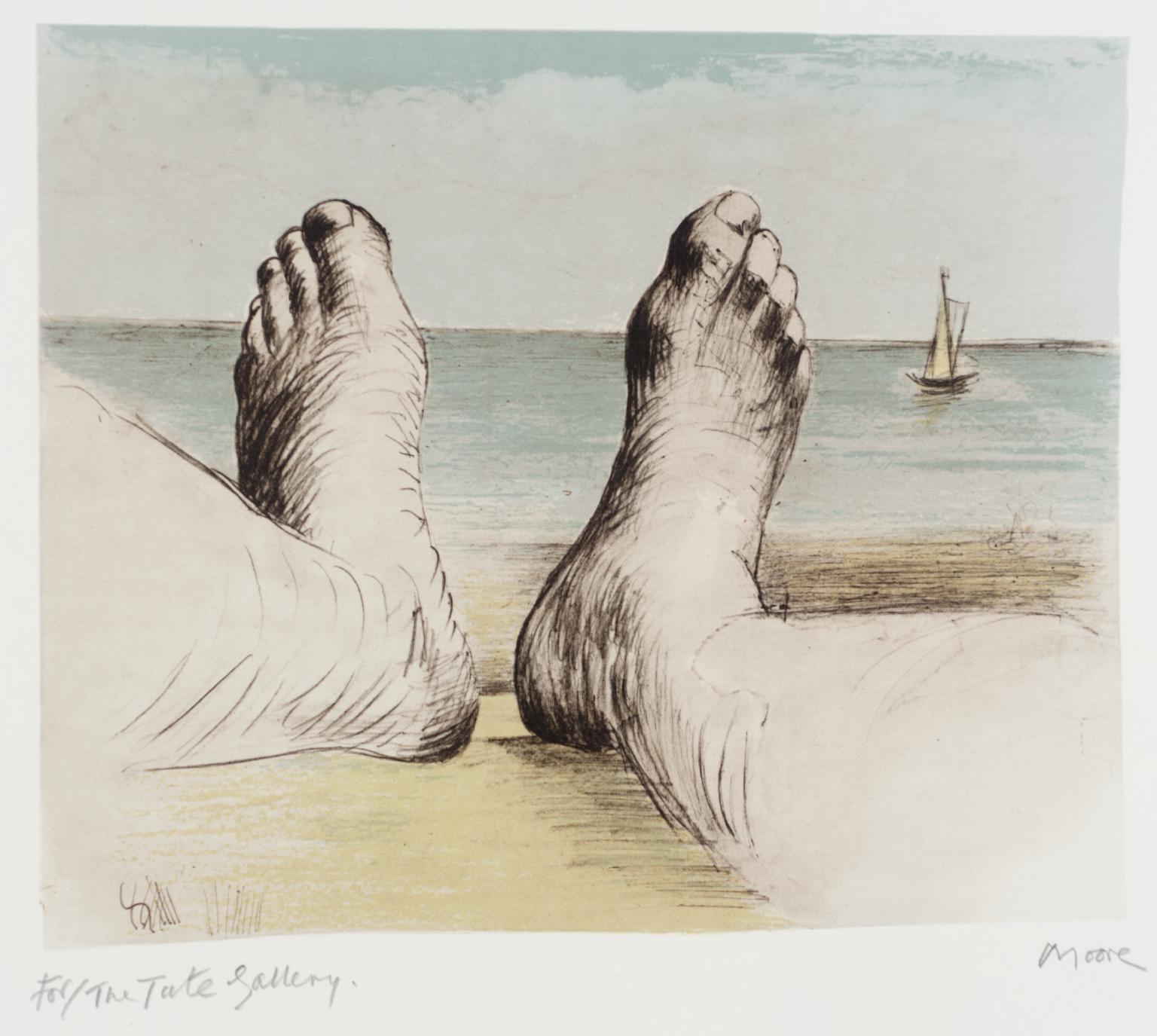
Henry Moore OM, CH, Feet on Holiday I 1979
26/30
artworks in Henry Moore at Tate
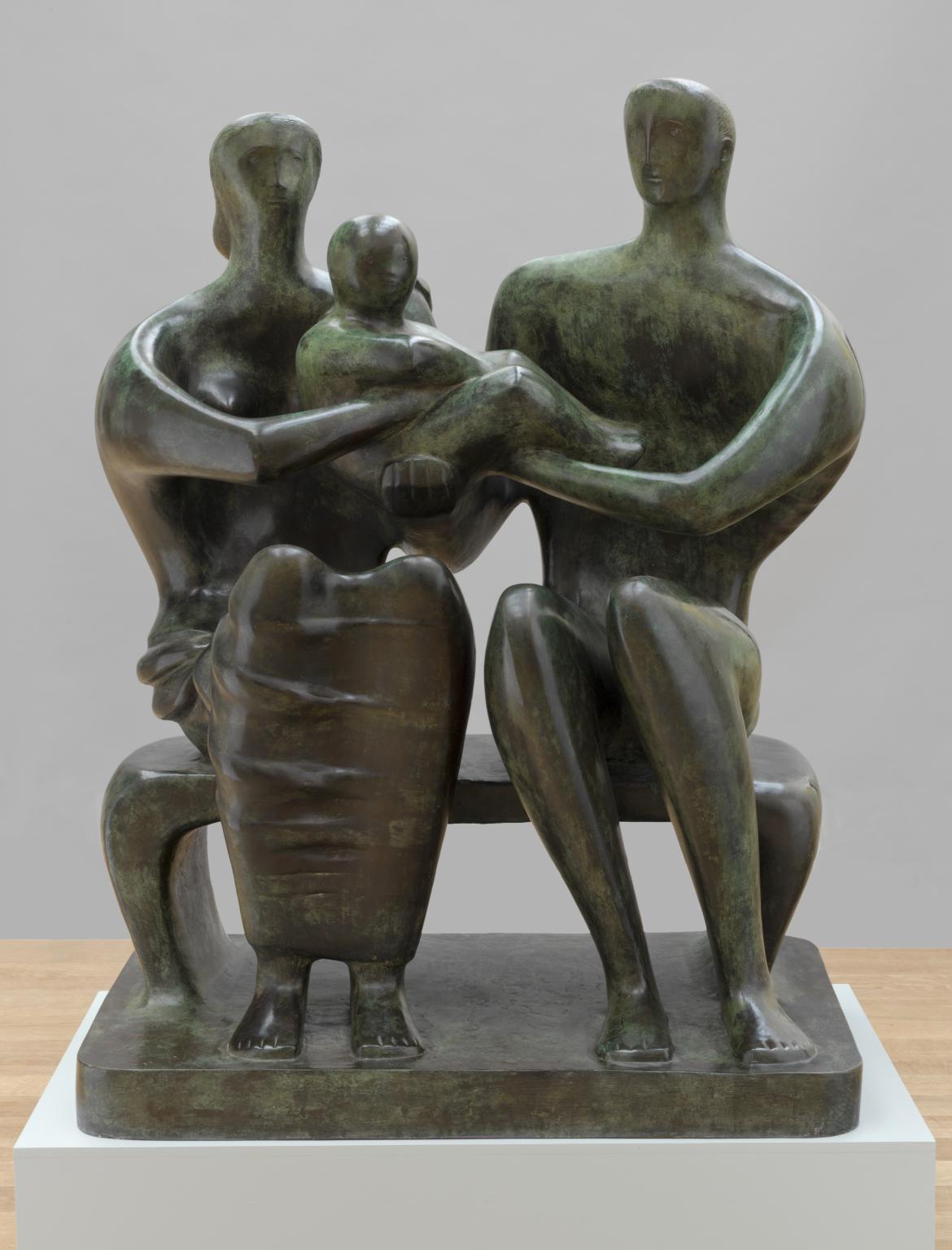
Henry Moore OM, CH, Family Group 1949, cast 1950–1
Family Group is derived from one of a number of maquettes that Moore made for a sculpture for Impington Village College in Cambridgeshire. In the end none of them was accepted. Several years later, however, he was approached to make a sculpture for the Barclay Secondary School in Stevenage and returned to the theme. The bronze was cast in an edition of four. One is still at the Barclay Secondary School. The others were acquired by the Museum of Modern Art in New York, Nelson D Rockefeller, and Tate.
Gallery label, September 2004
27/30
artworks in Henry Moore at Tate

Henry Moore OM, CH, Tube Shelter Perspective 1941
This picture was exhibited at the National Gallery in 1941. It was described in the catalogue as 'a terrifying vista of recumbent shapes, pale as all underground life tends to be pale; regimented, as only fear can regiment; helpless yet tense, safe yet listening, uncouth, uprooted, waiting in the tunnel for the dawn to release them. This is not the descriptive journalism of art. It is imaginative poetry of a high order.'
Gallery label, September 2002
28/30
artworks in Henry Moore at Tate
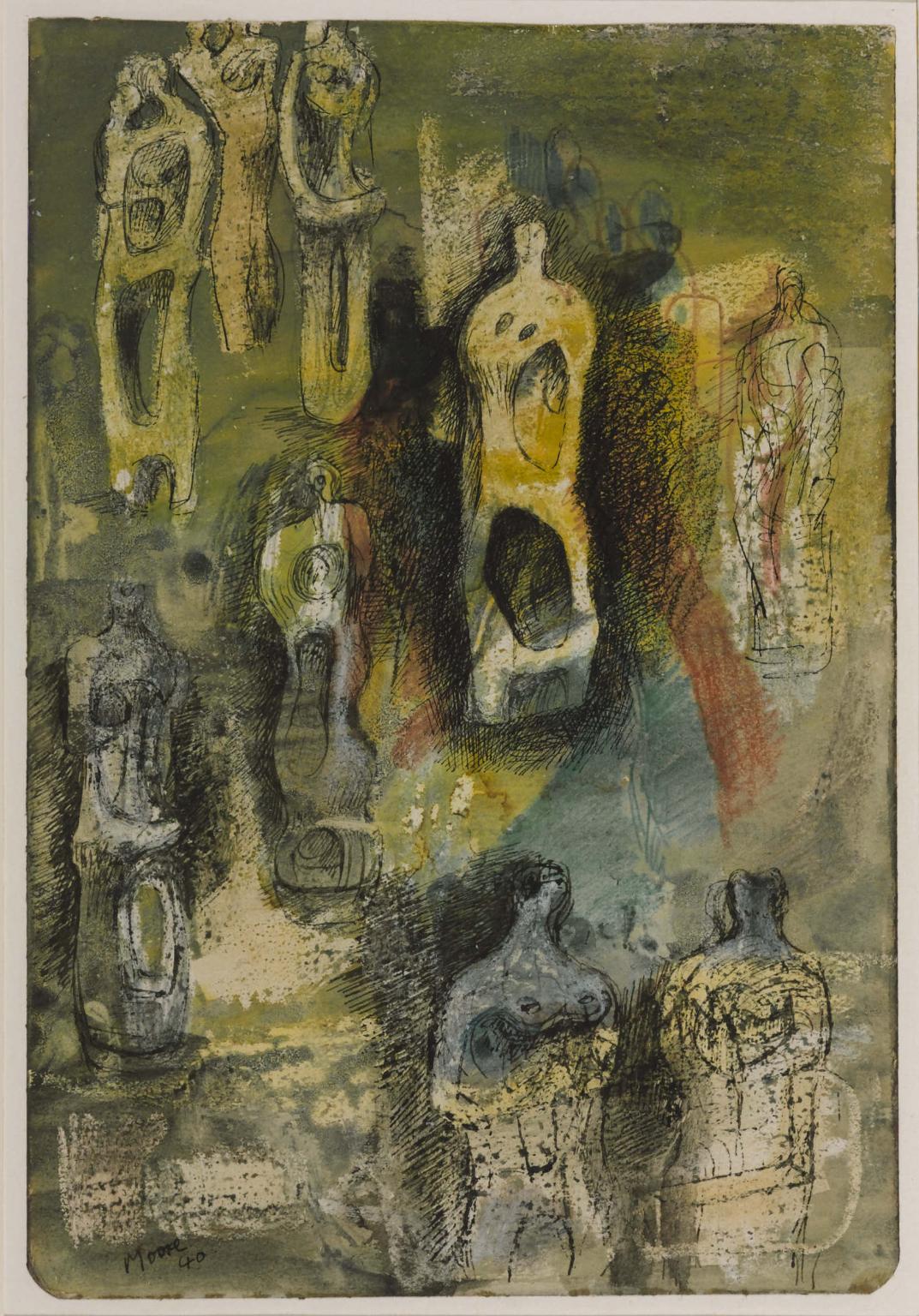
Henry Moore OM, CH, Standing Figures 1940
This drawing by Moore can be closely associated with his sculptures of the period. Typically, the forms suggest at once human bodies, shells and bones, and interior bodily shapes. For Moore, drawing was a kind of investigative process, which would throw up new ideas for sculpture. Instead of producing a single, resolved image, the sculptor would generally cover the paper with different, half-finished sketches.
Gallery label, September 2004
29/30
artworks in Henry Moore at Tate
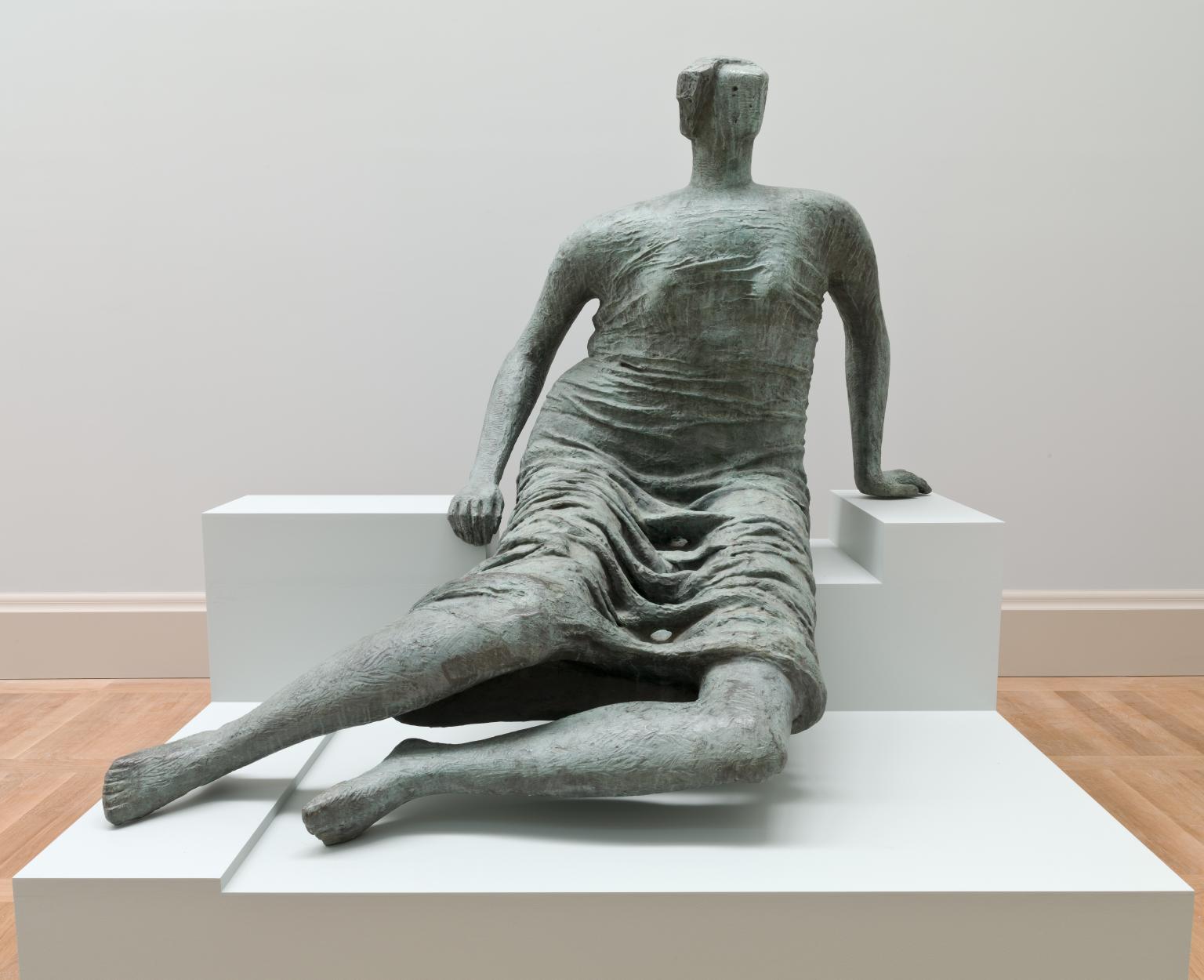
Henry Moore OM, CH, Draped Seated Woman 1957–8, cast c.1958–63
Two casts of this monumental female figure have been sited in public urban spaces: one in Wuppertal in Germany, another in the East End of London. London County Council’s policy of placing such work in deprived areas was part of a post-war revival of civil aspirations and social reform.
Gallery label, June 2003
30/30
artworks in Henry Moore at Tate
Art in this room






























You've viewed 6/30 artworks
You've viewed 30/30 artworks
